#singles collection (1981-2001)
Text
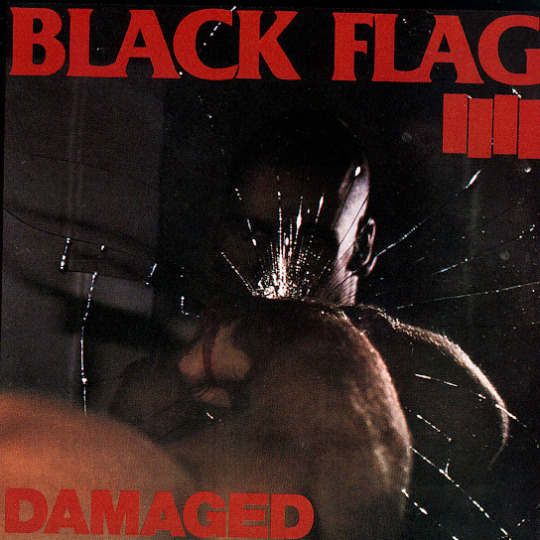
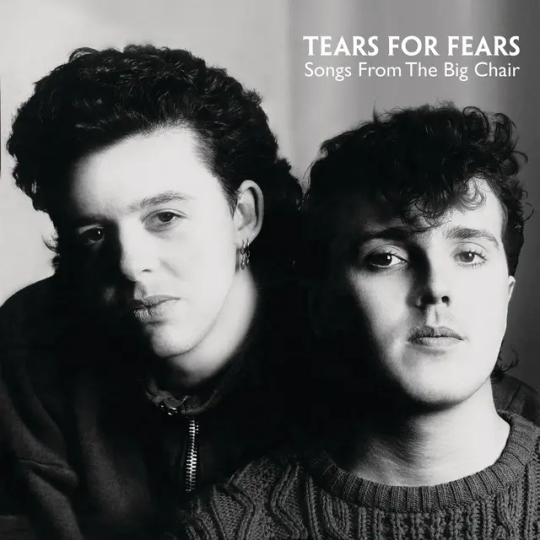

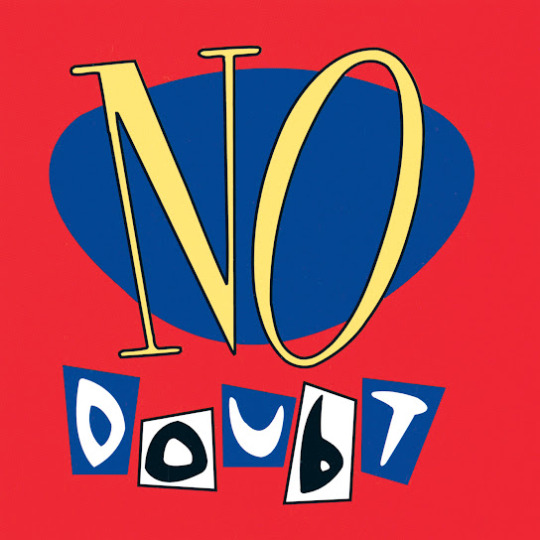






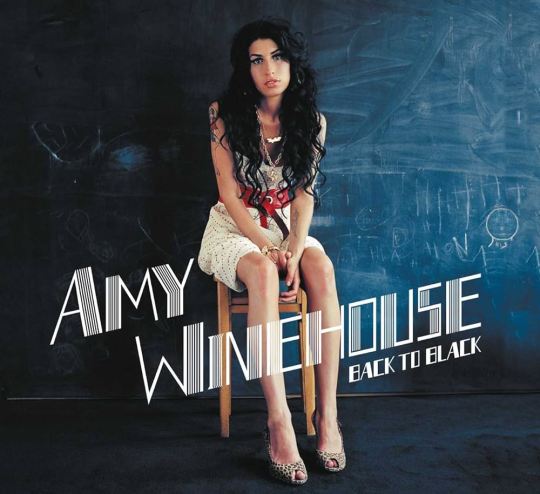


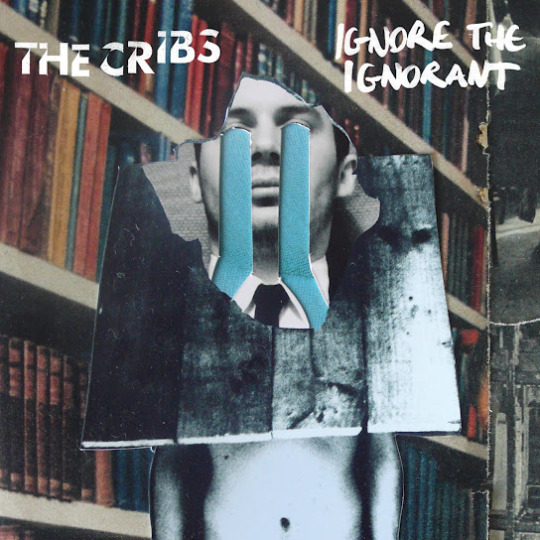

the NO-SKIP albums: a tag game 🎶💖
rules: share the albums that you can listen to nonstop. those lightning in a bottle-albums that scratch ur brain just right. every single track, an absolute banger. u could not skip one if u tried. no notes. stunning, show-stopping, immaculate. ur no-skip albums.
🔎 bonus & optional (but imo, v fun) rules: 1) add a track rec for us to listen to! AND 2) share ur favorite line(s) from that track! 👀
This was so hard!! There are so so so many albums not included but I think 15 albums is enough to where I look crazy but not tooooo crazy (doubtful) and I wanted to make it somewhat varied genre-wise. A lot of these artists have like multiple no-skip albums as well so picking between them was extra difficult—on some I went with the underrated favourite of mine to mix it up. I don't know! It's kinda all over the place.
Thank you so much to @ventiswampwater, @visceravalentines, @avrilsboy, & @actualfucking for tagging me!!! 🥹 I think there were a few others who tagged me but then removed my tag, probably because they saw I was tagged by others lol, so thank you to those ppl too!!<333
Tagging: @xoxo-gossipghoul (& anyone else! I think most people have done this at this point? But if you’re reading this and haven’t been tagged yet then this is me tagging you!!! lol)
Album List & Track Rec:
🏴 Damaged — Black Flag (1981)
track rec: Police Story
↳ This fucking city / Is run by pigs / They take the rights away / From all the kids
🪑 Songs from The Big Chair — Tears for Fears (1985)
track rec: Mothers Talk
↳ It's not that you're not good enough / It's just that we can make you better / Given that you pay the price / We can keep you young and tender / Following the footsteps of a funeral pyre / You were paid not to listen now your house is on fire
💀 Collection I & II — Misfits (1986/1995)
track rec: Mommy, Can I Go Out and Kill Tonight?
↳ Rip the veins from human necks until they're wet with life / Razor-blades love teenage flesh, an epidermoty / I'll bring back a souvenir, for it's my mommy's dream
🍊 No Doubt — No Doubt (1992)
track rec: Trapped in a Box
↳ Ah trapped in a box my life becomes void / And all of the thought for myself's now destroyed / Controlling my mind, what to eat, what to buy / Subliminal rules: how to live, how to die / Trapped in a box
🌙 Dreaming of You — Selena (1995)
track rec: God’s Child (Baila Conmigo) (Ft. David Byrne)
↳ God makes us dream / But won't set us free / Hey, hey, hey, hey / God calls us dance to songs we can't hear / Hey, hey, hey, hey
🌊 Tidal — Fiona Apple (1996)
track rec: Sullen Girl
↳ And there's too much going on / But it's calm under the waves in the blue of my oblivion / Under the waves in the blue of my oblivion
🦷 The Distillers — The Distillers (2000)
track rec: Red Carpet & Rebellion
↳ The palace dialed in the streets were burning / The red horizon came crashing through the morning / There was no contentment, only bloodshed / Red blood and social discontent / Bruised by puritan, oh, puritan exempt / It's like a peasant uprising
🦋 Greatest Hits — Mariah Carey (2001)
track rec: When You Believe (Mariah Carey & Whitney Houston)
↳ They don't always happen when you ask / And it's easy to give in to your fears / But when you're blinded by your pain / Can't see your way clear through the rain / A small but still, resilient voice / Says hope is very near
😈 Antics — Interpol (2004)
track rec: Not Even Jail
↳ I pretend like no one else to try control myself / I'm subtle like a lion's cage / Such a cautious display / Remember take hold of your time here / Give some meanings to the means / To your end / Not even jail
🌆 The City Sleeps in Flames — Scary Kids Scaring Kids (2005)
track rec: The World as We Know It
↳ A virus known as rage / Is brutal in destroying / And spreading all over the place / Bleeding culture / The dying nation / When the money controls the tide / We won't get another chance this time / We won't get a second chance this time
🎺 Back to Black — Amy Winehouse (2006)
track rec: Some Unholy War
↳ If my man was fightin' some unholy war / I would be behind him / Straight shook up beside him with strength / He didn't know, it's you I'm fightin' for / He can't lose with me in tow (With me in tow) / I refuse to let him go (To let him go) / At his side and drunk on pride / We wait for the blow
🎸 Favourite Worst Nightmare — Arctic Monkeys (2007)
track rec: Teddy Picker
↳ And it's the thousandth time that it's even bolder / Don't be surprised when you get bent over / They told you, but you were gaggin' for it
3️⃣ Three Vol. 1 — Joel Plaskett (2009)
track rec: Gone, Gone, Gone
↳ In the middle of a lonely night / Got caught in the hallway light / For a minute you were gettin' close / I suspect I've seen a ghost / In the middle of a highway dream / You got caught in the headlight beam / Down the road with your tired eyes / Good old boys with your old goodbyes
🫙 Ignore the Ignorant — The Cribs (2009)
track rec: Emasculate Me
↳ Spent all this time chasing happy / But happy is boring to me / So put walls around our misery / And gently emasculate me
🧱 Brutalism — IDLES (2018)
track rec: Exeter
↳ It seems like no-one cares / I think I'll take the stairs / 'Cause nothing ever / He punched himself in the face / To prove he wasn't gay / 'Cause nothing ever happens
15 notes
·
View notes
Text
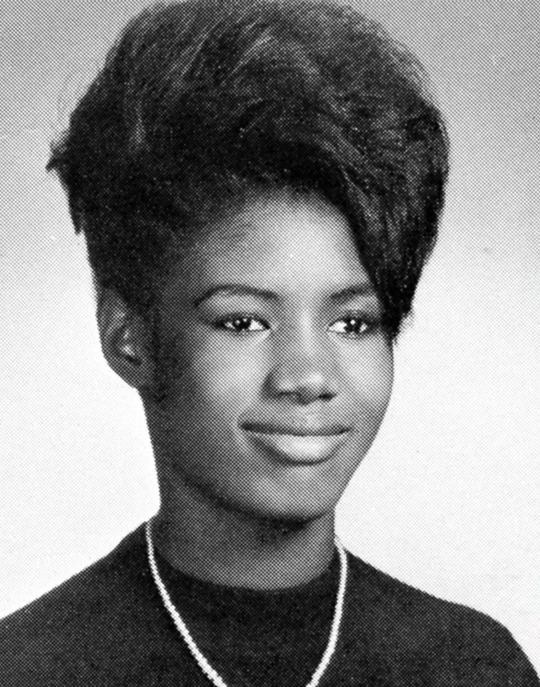
Grace Jones
Grace Beverly Jones (born 19 May 1948??) is a model, singer and actress. Born in Jamaica, she and her family moved to Syracuse, New York, when she was a teenager. Jones began her modeling career in New York state, then in Paris, working for fashion houses such as Yves St. Laurent and Kenzo, and appearing on the covers of Elle and Vogue. She notably worked with photographers such as Jean-Paul Goude, Helmut Newton, Guy Bourdin, and Hans Feurer, and became known for her distinctive androgynous appearance and bold features.
Her grandfather, John Williams, was also a musician and played with Nat King Cole. Her father, Bishop Robert Winston Jones, moved the family to CNY and founded the Apostolic Church of Jesus Christ in Syracuse. Jones' brother is megachurch preacher Bishop Noel Jones, who starred on the 2013 reality show Preachers of LA.
Through her relationship with longtime collaborator Jean-Paul Goude, Jones has one son, Paulo. From Paulo, Jones has one granddaughter.
Jones attended Central High School in Syracuse. She claims she doesn't know how old she is. Although some sources say she was born in 1948, Jones says she graduated early from Central High School in Syracuse in 1967; she was around 15 years old, ahead of most of her peers due to more rigorous education at an early age in Jamaica. She also studied theater at Onondaga Community College.
Beginning in 1977, Jones embarked on a music career, securing a record deal with Island Records and initially becoming a high-profile figure of New York City's Studio 54-centered disco scene. In the early 1980s, she moved toward a new wave style that drew on reggae, funk, post-punk, and pop music, frequently collaborating with both the graphic designer Jean-Paul Goude and the musical duo Sly & Robbie. She scored Top 40 entries on the UK Singles Chart with "Private Life", "Pull Up to the Bumper", "I've Seen That Face Before", and "Slave to the Rhythm". In 1982, she released the music video collection A One Man Show, directed by Goude, which earned her a nomination for Best Video Album at the 26th Annual Grammy Awards. Her most popular albums include Warm Leatherette (1980), Nightclubbing (1981), and Slave to the Rhythm (1985).
As an actress, Jones appeared in several indie films prior to landing her first mainstream appearance as Zula in the fantasy-action film Conan the Destroyer (1984) alongside Arnold Schwarzenegger and Sarah Douglas, and subsequently appeared in the James Bond movie A View to a Kill (1985) as May Day, and starred as a vampire in Vamp (1986); all of which earned her nominations for the Saturn Award for Best Supporting Actress. In 1992, Jones acted in the Eddie Murphy film Boomerang, and contributed to the soundtrack. She also appeared alongside Tim Curry in the 2001 film Wolf Girl.
34 notes
·
View notes
Text
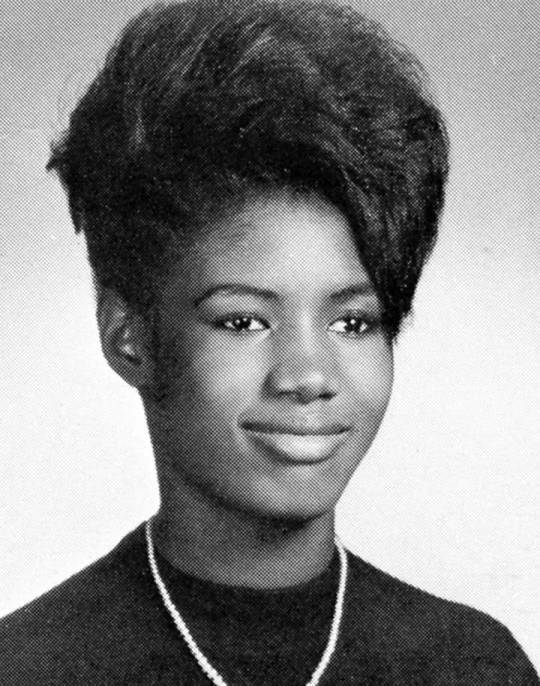
Grace Beverly Jones (born 19 May 1948??) is a model, singer and actress. Born in Jamaica, she and her family moved to Syracuse, New York, when she was a teenager. Jones began her modeling career in New York state, then in Paris, working for fashion houses such as Yves St. Laurent and Kenzo, and appearing on the covers of Elle and Vogue. She notably worked with photographers such as Jean-Paul Goude, Helmut Newton, Guy Bourdin, and Hans Feurer, and became known for her distinctive androgynous appearance and bold features.
Her grandfather, John Williams, was also a musician and played with Nat King Cole. Her father, Bishop Robert Winston Jones, moved the family to CNY and founded the Apostolic Church of Jesus Christ in Syracuse. Jones' brother is megachurch preacher Bishop Noel Jones, who starred on the 2013 reality show Preachers of LA.
Through her relationship with longtime collaborator Jean-Paul Goude, Jones has one son, Paulo. From Paulo, Jones has one granddaughter.
Jones attended Central High School in Syracuse. She claims she doesn't know how old she is. Although some sources say she was born in 1948, Jones says she graduated early from Central High School in Syracuse in 1967; she was around 15 years old, ahead of most of her peers due to more rigorous education at an early age in Jamaica. She also studied theater at Onondaga Community College.
Beginning in 1977, Jones embarked on a music career, securing a record deal with Island Records and initially becoming a high-profile figure of New York City's Studio 54-centered disco scene. In the early 1980s, she moved toward a new wave style that drew on reggae, funk, post-punk, and pop music, frequently collaborating with both the graphic designer Jean-Paul Goude and the musical duo Sly & Robbie. She scored Top 40 entries on the UK Singles Chart with "Private Life", "Pull Up to the Bumper", "I've Seen That Face Before", and "Slave to the Rhythm". In 1982, she released the music video collection A One Man Show, directed by Goude, which earned her a nomination for Best Video Album at the 26th Annual Grammy Awards. Her most popular albums include Warm Leatherette (1980), Nightclubbing (1981), and Slave to the Rhythm (1985).
As an actress, Jones appeared in several indie films prior to landing her first mainstream appearance as Zula in the fantasy-action film Conan the Destroyer (1984) alongside Arnold Schwarzenegger and Sarah Douglas, and subsequently appeared in the James Bond movie A View to a Kill (1985) as May Day, and starred as a vampire in Vamp (1986); all of which earned her nominations for the Saturn Award for Best Supporting Actress. In 1992, Jones acted in the Eddie Murphy film Boomerang, and contributed to the soundtrack. She also appeared alongside Tim Curry in the 2001 film Wolf Girl.
Jones has been cited as an inspiration for multiple artists, including Annie Lennox, Lady Gaga, Rihanna, Solange, Lorde, Róisín Murphy, Brazilian Girls, Nile Rodgers, Santigold, and Basement Jaxx. In 2016, Billboard ranked her as the 40th greatest dance club artist of all time.
19 notes
·
View notes
Video
youtube
Happy Birthday musician Michael ‘Mike’ Scott born 14th December 1958 in Edinburgh.
Scott was born and raised in Edinburgh. His father, Allan Scott, left the family when Mike was ten years old, but the two were reunited in 2007.
Scott was interested in music from an early age. At age 12, after the family had moved to Ayr, he began a serious interest in learning guitar. In 1968 he mentions listening to Hank Williams as a “life-changing” experience. The next year, Scott was playing in school bands and formed the band Karma, they were inspired by David Bowie, The Beatles and Bob Dylan.
Playing in a few bands by the time 1981 came he had started the idea of The Waterboys, he admits that he “is” The Waterboys, the lineup has changed through the years but he say that “ there’s no difference between Mike Scott and the Waterboys; they both mean the same thing. They mean myself and whoever are my current travelling musical companions.”
It’s not all about having hits with The Waterboys, Mike is a natural songwriter, as The Waterboys and Mike Scott he has released 15 albums, 4 of the singles reached the top 40.
In mid-1980s, when The Waterboys supported U2 at Wembley Arena in London, Mike Scott’s band seemed all set for the same global status as Bono and Co.
The following year, when their third album, This Is The Sea, and classic single, The Whole Of The Moon, catapulted the band’s “big music” into the Top 10 such success seemed virtually assured. But it was never what he wanted. Under pressure from his record company to produce more stadium-pleasing Waterboys tracks, he retreated to Ireland… and made a folk record. Mike has lived in the Fair city of Dublin for over 12 years and holds a dual nationality, he said in an interview last year “ ….people have often told me I’m an honouree Irishman, but I feel Scottish. But I’m very proud to live in Ireland. And my children are Irish. So, now I’ve very deep roots here.”
Mike continues to write and tour with the Waterboys, I remember always arguing with a friend that disagreed with me that the Waterboys were (are) a Scottish group, it’s true some of the members of the group have come from Ireland and England as well as the US but Mike Scott, as I said to him and would still say to him IS The Waterboys, The Whole of the Moon is a top class song and the lyric…
“Unicorns and cannonballs, palaces and piers
Trumpets, towers and tenements
Wide oceans full of tears
Flags, rags ferryboats
Scimitars and scarves”
……could only be written by a Scotsman. The song was initially released to a limited success in 1985, it resurfaced again in 1991 and won an Ivor Novello Award as “Best Song Musically and Lyrically” that year and reached number 3. Celtic Women sing a version at their concerts, Jennifer Warnes has also covered it as well as the late great Prince at Ronnie Scott’s Jazz Club during his 2014 Hit & Run tour. U2 used the song as a “walk out tune” during the Joshua Tree tour.
The Waterboys released their 16th studio album last May, I’ve listened to a few of the tracks, Blackberry Girl for me is the stand out tune, Once were Brothers is a decent track too, it’s a cover of Robbie Robertson song.
The Waterboys are set for dates next year in Portugal, Netherlands, the Scandinavian countries and Germany, before heading home with gigs at Glasgow Royal Concert Hall on October 2nd, Edinburgh Usher Hall on the 3rd and back to Glasgow Barrowlands on the 6th, they then head south for a number of dates in England
The song I have chosen this year was originally from The Waterboys Too Close to Heaven album, a collection of outtakes, alternative versions, and unreleased tracks from The Waterboys' Fisherman's Blues period, released in September 2001. This version is sung in a Scottish accent, it is, in my opinion fucking brilliant. The line You feel like you want to have your sporran refilled, just gets me.If I was to describe it, I would say it is like The Proclaimers on Acid.
The mountain is steep
The ditches are deep
The task in hand
Is making us weep
But here's a promise
(I intend to keep
/
That I mean to keep)
Seed it in your mind
And say it each night
Before you sleep:
We will climb higher in time
(och!)
You've got a head full of trouble
And a ship to build
(You think you won't make it
But you know you will
You feel you need your
Cup refilled
Fill it out of mine
We'll drop the defenses
Pool our skill
/
Your heart you're hiding
It's making you ill
You feel like you want to have your
Sporran refilled
Well, fill it out of mine
Let the soulful water
Overspill)
And we will climb higher in time
I've been to the bottom
I've been on the train
I've slept in the gutter
With my head in a drain
I've been brutally proud
I've been mortally shamed
But this is not a crime
I'm just learning, my friends
That it's all in the game
And we will climb higher in time
(Och!)
Climb higher in time
Climb higher in time
11 notes
·
View notes
Text


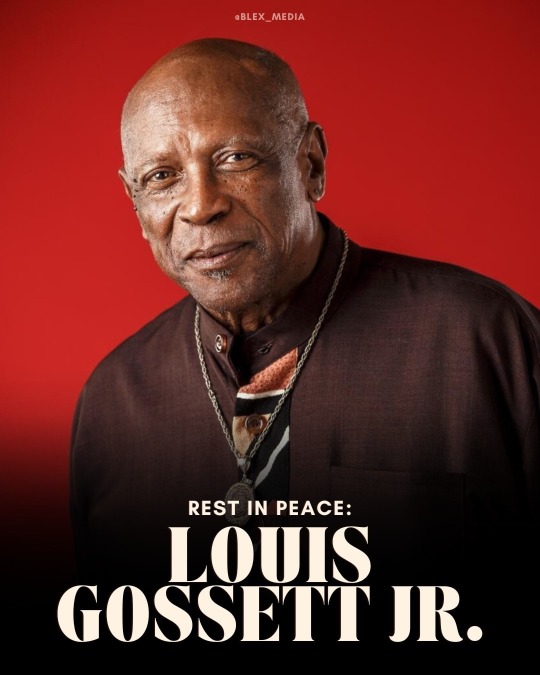
Louis Cameron Gossett Jr. (May 27, 1936 – March 29, 2024) was an American actor. Born in Coney Island, Brooklyn, New York City, he made his stage debut at the age of 17.[2] Shortly thereafter, he successfully auditioned for the Broadway play Take a Giant Step. Gossett continued acting onstage in critically acclaimed plays including A Raisin in the Sun (1959), The Blacks (1961), Tambourines to Glory (1963), and The Zulu and the Zayda (1965). In 1977, Gossett appeared in the popular miniseries Roots, for which he won Outstanding Lead Actor for a Single Appearance in a Drama or Comedy Series at the Emmy Awards.
Died March 29, 2024 (aged 87)
Santa Monica, California, U.S.
Gossett continued acting in high-profile films, television, plays, and video games. In 1982, for his role as Gunnery Sergeant Emil Foley in An Officer and a Gentleman, he won the Academy Award for Best Supporting Actor and became the first black actor to win in this category. At the Emmy Awards, Gossett continued to receive recognition, with nominations for The Sentry Collection Presents Ben Vereen: His Roots (1978), Palmerstown, U.S.A. (1981), Sadat (1983), A Gathering of Old Men (1987), Touched by an Angel (1997), and Watchmen (2019). He won and was nominated at other ceremonies including the Golden Globe Awards, Black Reel Awards, and NAACP Image Awards. Gossett was also well-known for his role as Colonel Chappy Sinclair in the Iron Eagle film series (1986-1995).
Gossett's other film appearances include Hal Ashby's The Landlord (1970), Paul Bogart's Skin Game (1971), George Cukor's Travels with My Aunt (1972), Stuart Rosenberg's The Laughing Policeman (1974), Philip Kaufman's The White Dawn (1974), Peter Yates's The Deep (1977), Wolfgang Petersen's Enemy Mine (1985), Christopher Cain's The Principal (1987), Mark Goldblatt's The Punisher (1989), Daniel Petrie's Toy Soldiers (1991), and Jasper, Texas (2003), and his television appearances include Bonanza (1971), The Jeffersons (1975), American Playhouse (1990), Stargate SG-1 (2005), Left Behind: World at War (2005), Boardwalk Empire (2013), and The Book of Negroes (2015).
Gossett was married three times and fathered one son and adopted one son. His first marriage was to Hattie Glascoe; it was annulled. His second, to Christina Mangosing, took place on August 21, 1973. Their son Satie was born in 1974. Gossett and Mangosing divorced in 1975. His third marriage, to Star Search champion Cyndi James-Reese, took place on December 25, 1987. They adopted a son, Sharron (born 1977). Gossett and James-Reese divorced in 1992.[117] Louis was the first cousin of actor Robert Gossett who starred on TNT's The Closer.
In 2022, Gossett was cast in a supporting role for the upcoming American horror film, Awaken the Reaper.[116] The film also features performances by Lance Henriksen and Robin Curtis. Awaken the Reaper is directed by Justin Paul and Dave Campfield. The film is produced by Fourth Horizon Cinema, Impact Media Studios and Design Weapons. In 2023, he portrayed Ol' Mister in the 2023 remake of The Color Purple. The role was originally portrayed by Adolph Caesar in the Steven Spielberg-directed critically acclaimed 1985 film.
Gossett stated that in 1966 he was handcuffed to a tree for three hours by the police in Beverly Hills.
Gossett struggled with a debilitating illness during the 1990s and early 2000s, having been given a prognosis of six months to live from a doctor at one stage. In 2001, he learned much of his illness was due to toxic mold in his Malibu home. On February 9, 2010, Gossett announced that he had prostate cancer. He added the disease was caught in its early stages, and he expected to make a full recovery. In late December 2020, Gossett was hospitalized in Georgia with COVID-19.
1 note
·
View note
Note
hello cyan!
i've been on a hunt for people's top 10 lists! would you be so kind as to share with me your faves for these? i'd really appreciate it!
a) movies
b) shows (anime included)
c) games (mobile included)
d) books (manga not included :( )
e) music artists
i know it's a lengthy ask but if you would find the time for these, i would appreciate it so much really! <3
q.
Hello Q! I'm sorry it took me so long to respond, you gave me much to think about! Don't know why you collect these answers but I hope you enjoy them!
Some categories were hard to figure out but it was nice trying to remind myself my favorites.
a) top 10 movies
Princess Mononoke (1997) (easy pick, I love this one the most)
Dead Poet Society (1989)
Indiana Jones series (1981-1989) (I can stomach the Crystal Skull but I'd rather not to?)
Lord of The Rings series (2001-2003)
Pelíšky/Cozy Dens (1999) (A Czech movie that literally means Christmas to me - it is a must to watch with my dad on Christmas Eve, the only tradition about that day that I actually enjoy, it's full of czech humour and history)
Noc na Karlštejně/A Night at Karlstein (1974) (Another Czech movie, or actually a musical that I know all the songs to, seen an adaptation in theatre and it was lit as fuck)
Angélique series (1964-1968) (quite a questionable movie series in terms of sexual themes and women's rights but I do attribute my queer awakening to this character and that needs to wield some weight)
Children of Men (2006)
Batman (2005-2012 Nolan Trilogy)
Isle of Dogs (2018) (the first time I went over to my girlfriend's, we watched this... amazing movie, amazing memory.. amazing girlfriend <3)
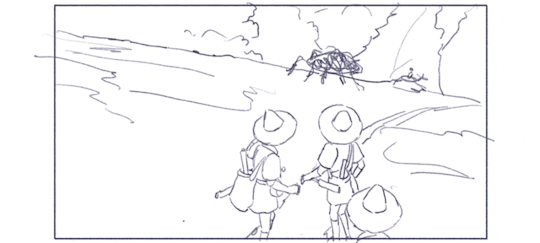
(my practice animation of a Princess Mononoke scene for English class)
b1) top 10 shows (no anime)
(I don't watch that many shows that are not anime so this list is not really most to least favorite - only the top 3 are sorted, the rest is just written out)
Avatar: The Last Airbender (animated, not the Netflix one)
Castlevania
Buffy The Vampire Slayer
Game of Thrones
The Boys
Invincible
The 100 (the first few seasons, the ending is insane, me not likey)
Helluva Boss
Arcane
The Umbrella Academy
b2) top 10 shows (only anime)
Wolf's Rain (watched it once years ago... will never watch it again because it causes me anguish, I love it though)
Yuri!! on Ice (it's a once-a-month watch)
Dr. Stone (during exam season I play it on repeat: 1st+2nd season on day 1, Ryuusui Special+3rd season on day 2, repeat!)
The Disastrous Life of Saiki K.
The 86
Sasaki To Miyano (healing my little gay heart)
Ao No Exorcist (I love the manga and the movie!!! show is just okay)
Death Note
Kimetsu no Yaiba (the first manga I've ever read from start to finish was this one and therefore the show holds a special place in my heart - also the quote on most my sites: "Growing old and dying is the beauty of the fleeting creature called a human being" is from the manga and also hanging on my wall, it's my fave manga panel ever)
SK8 The Infinity
Honorable mentions: Boku No Hero Academia, Fullmetal Alchemist: Brotherhood, Jujutsu Kaisen, Trigun & Trigun Stampede, 91 Days, Bungo Stray Dogs, Black Clover, Gintama, Link Click, Heaven Official's Blessing :)
c) top 10 games
(going to be completely honest...I have not played a single video game before 2019 - my family thinks games cause rotten brains and I agree with that statement, at the same time I love games.. justf FYI I am very inexperienced)
(another note: I LOVE open worlds - I like climbing shit and falling off cliffs, I love going on my own and fighting shit and solving puzzles)
Genshin Impact
Assassin's Creed (I love Brotherhood, have and like 2nd and Odyssey, have but haven't played Syndicate yet, HATE Unity [the controls suck ass], I watched some gameplay of other games, I love the series overall)
Honkai: Star Rail
The Witcher
Tears of Themis (I try and play alot of games like this but they don't have Vyn Richter so what's the point of them really? [insert megamind meme: no vyn richter?])
Minecraft (I like building, and one of my last memories with one of my besties was from multiplayer, I have our last world saved with a mausoleum in the place of his spawn - it keeps precious memories)
NU:Carnival (the fashion is offensively awesome, big inspiration for my character designs sometimes)
Legend of Zelda (sounds and looks like a game I would love but I have yet to experience it on my own)
The Silent Age (first game I owned on my own and played start to finish without anybody else's input, it's very simple and somewhat boring but I like the vibe and I like the independence I felt while playing it)
Destiny 2 (my PC has issues running it but I absolutely love it, also I have like 40 gifs of myself just dancing in this game..)

d) top 10 books
Krysař/The Ratcatcher by Viktor Dyk (1915) (fell in love with this Czech required reading book during middle school, read it again for high school finals, still love it to this day)
Demian by Hermann Hesse (1919)
Sandman Slim by Richard Kadrey - the series has I think 12 books running 2009-2021 but I only have the first 3 (2009-2011) however they deserve to be on this list since I've read them like 13 times)
Magnus Chase and the Gods of Asgard by Rick Riordan (2015-2017) (I also enjoy his series with egyptian gods but Magnus Chase slayed)
The Inheritance Cycle: Eragon, Eldest, Brisingr, Inheritance by Christopher Paolini (2003-2011)
The Chronicles of Narnia by C.S. Lewis (1950-1956)
Lady Pokingham Or They All Do It by allegedly Oscar Wilde (1879) (it's an erotica, a guilty pleasure of mine)
Smrt Krásných Srnců/Death of Beautiful Roebucks by Ota Pavel (1971) (another Czech gem really)
Note to Self by Connor Franta (2017)
Witch Hat Atelier by Kamome Shirahama (2016-present) (I know you said no manga, but it's so beautiful! I even used it as a reference literature to my bachelor thesis - I HAVE to include it!)
e) top 10 music artists
(this list was an absolute struggle, I don't listen to music that much, and since my girlfriend has just such a great taste in music I mostly don't focus on anything and just go along with their recs)
Stray Kids (a remnant of high school days when I listened to alot of kpop - I still listen to some others but Stray Kids are precious to me)
Silverchair (my favorite rock band)
bbno$
Citizen Soldier (some of their music quite literally kept me alive through some rough nights)
Lemon Demon [two trucks holding hands~, two trucks holding hands~, the passion, the passion, is more than I can withstand~~]
Takayan (たかやん)
CORPSE!
Grim Salvo
grandson
Nathan Wagner
I do listen to a lot of anime opening songs, and movie or game soundtracks and also to literally anything you make into nightcore version lmao.
Anyway, that's all I have <3 Thank you for this ask, Q!
1 note
·
View note
Text
List of 2024
(constantly updated)
Books 📕📚📖
Julie de Lespinasse - Letters of Mlle. De Lespinasse
Agnieszka Szpila - Heksy
Jerzy Urban - Jajakobyły
Jerzy Jarniewicz - Makijaż
Movies🎥🎞🎬
The Age of Innocence [1993]
Human Traffic [1999]
Whiplash [2014]
The Northman [2022]
James Bond No time to die [2021]
The Neon Demon [2016]
Galaxy Quest [1999]
Vampire's kiss [1988]
Jurassic World Dominion [2022]
The Last Night in Soho [2021]
Corsage [2022]
Natural City [2003]
Nobody [2021]
Being John Malkovitch [1999]
The Hudsucker Proxy [1994]
Tick, tick... BOOM [2021]
Babylon [2022]
Grey Gardens [2009]
Lady Bird [2017]
Asteroid City [2023]
Pig [2021]
The Unbearable Weight of Massive Talent [2022]
Barton Fink [1991]
Sisu [2023]
Mandy [2018]
District 9 [2009]
Starship Troopers [1997]
Angel Heart [1987]
Scanners [1981]
Studio 54 [1998]
Things to Do in Denver when You're Dead [1995]
Fargo [1996]
Sicario [2015]
Godzilla Minus One [2023]
The Fly [1986]
Factotum [2005]
Story of O [1975]
Adaptation [2002]
Mermaids [1990]
Blade [1998]
Blade II [2002]
Blade: Trinity [2004]
The Royal Tenenbaum [2001]
The Diary of a Teenage Girl [2015]
Magnolia [1999]
Natural Born Killers [1994]
The Lighthouse [2019]
Pulp Fiction [1994]
Go [1999]
Reality Bites [1994]
9 songs [2004]
Interview with a Vampire [1994]
Egoiści (PL) [2000]
Adventures of Buckaroo Banzai Across the 8th Dimension [1984]
Heavenly Creatures [1994]
Singles [1992]
Wicker Park [2004]
Dune: Part Two [2024]
The Favourite [2018]
Under the Volcano [1984]
Phantom of the Paradise [1974]
In the mouth of madness [1994]
The Machinist [2004]
Prêt-à-Porter [1994]
Paris, Texas [1984]
Death Wish [1974]
Marnie [1964]
La Strada [1954]
Cover Girl [1944]
Kallafiorr (PL) [1999]
The Last Voyage of Demeter [2023]
The Gentlemen [2019]
The Menu [2022]
Lisbon Story [1994]
The Great Gatsby [1974]
Wyatt Earp [1994]
Gothic [1986]
Climax [2018]
Meg 2: The Trench [2023]
Aquaman and the Lost Kingdom [2023]
Soaked in bleach [2015]
Godzilla x Kong: The New Empire [2024]
The Adventures of Priscilla, Queen of the Desert [1994]
Pom Poko [1994]
Barbie [2023]
Legends of the Fall [1994]
Rimini [2022]
La femme publique [1984]
Ophelia [2018]
Rosencrantz & Guildenstern Are Dead [1990]
Near Dark [1987]
Léon: the Professional [1994]
Boyhood [2014]
x [2022]
My Fair Lady [1964]
Blood Simple [1984]
La Reine Margot [1994]
Lisa Frankenstein [2024]
Quiz show [1994]
M for Murder [1954]
Nightcrawler [2014]
Don Juan DeMarco [1994]
Shallow Grave [1994]
5x2 [2004]
Summer of Blood [2014]
It Could Happen to You [1994]
Idiocracy [2006]
Banlieue 13 [2004]
This is Spinal Tap [1984]
Gospel According to Harry [1994]
Furiosa: A Mad Max Saga [2024]
Garden State [2004]
Mean Girls [2004]
Eros [2004]
Zardoz [1974]
Little woman [1994]
Humanist Vampire Seeking Consenting Suicidal Person [2023]
Anatomie d'une chute [2023]
Madame Web [2024]
Flash [2023]
Night of the comet [1984]
Repo Man [1984]
50 first dates [2004]
Along Came Polly [2004]
Altered states [1980]
The Lost Boys [1987]
Society [1989]
Outland [1981]
Club Zero [2023]
Ghostbusters: Frozen Empire [2024]
Series 📺🖥💻
Archer season 14
Guillermo del Toro's Cabinet of Curiosities: Episode 7 The Viewing
Chernobyl
Rojst Millenium
3 body problem [Netflix]
The Gentleman
Ripley
Bridgertones season 3
The Boys season 4
Sausage Party: Foodtopia
The Umbrella Academy season 4
Kleo season 2 [ongoing]
Penguin [onoging]
Scents 🧯🫧🧴
BOUGHT
Robert Piquet Bandit
Etat Libre d'Orange Attaquer Le Soleil Marquis De Sade
Natural Blossom Moon Flower
USED UP
Pani Walewska
Elizabeth Arden Green Tea
Joe Malone Cologne
Joe Malone Earl Gray and Cucumber
The Library of the Fragrance Earl Gray
Current faves 💡🔥🌠
(no particular order)
brutalist, concrete architecture
Helmut Lang collections from 90s but for my everyday I choose Uniqlo and Muji
My all time favorite record is Silence is Sexy by Einstürzende Neubauten, however, honorable mention is reserved for Kruder & Dorfmeister DJ Kicks
Def some 90s nostalgia, as I was born in early 80s and I grew up then
I'm enjoying body horrors more than I wish to admit
incense perfumes
1 note
·
View note
Text


SLAVE THE RHYTHM Fan Made Video 2022
TOYAH AT HOME - THE LOCKDOWN PERFORMANCES 2020
TOYAH AT HOME & AWAY 2021
TOYAH AT HOME & AWAY 2022
LIVE DOWNLOADS ARCHIVE (1976 - 2023)
CONCERT DOWNLOADS All songs in one MP3
MUSIC PERFORMANCES & INTERVIEWS ON TV (1979 - 1985)
TOYAH LIVE (1981 - 1982)
4 CLASSIC CONCERTS + MP3 / VIDEO DOWNLOADS
TOYAH LIVE (2005 - 2023)
10 CONCERTS + MP3 / VIDEO DOWNLOADS

DISCOGRAPHY
ALBUMS
SINGLES
REISSUES
LIVE ALBUMS
COMPILATIONS
COLLABORATIONS
PICTURE DISCS
LOVE IS THE LAW & Rebel Run Reissues (2024)
WARRIOR ROCK Reissue (2024)
THE CHANGELING Reissue (2023)
ANTHEM Reissue (2022)
LIVE AT THE RAINBOW & LIVE AT DRURY LANE Reissues (2022/23)
POSH POP Album (2021) and IN THE COURT OF THE CRIMSON QUEEN RHYTHM DELUXE EDITION Reissue (2023)
SOLO Box Set (2020)
VINYL REISSUES 2018-2024
Desire (2018), 6 x Coloured Vinyl (2020), Mesmerised (2021), Four From Toyah (2021), Four More From Toyah (2022), Brave New World (2023), Sheep Farming In Barnet (2023) and Rebel Run (2024)
SHEEP FARMING IN BARNET
Box Set And Limited Edition Vinyl (2020) & 140g Vinyl Repress (2023)
THE BLUE MEANING
Box Set And Limited Edition Vinyl (2021) &
Remastered Black Vinyl (2022)
TOYAH! TOYAH! TOYAH! (Live 1980) Reissue (2022)

RARE AND COLLECTIBLE
TOYAH ON DISC - CD COVERS SPECIAL FEATURE
TOYAH ON TAPE - CASSETTE COVERS
RECORD REVIEWS
TOYAH TALKS MUSIC - THE ALBUMS IN HER OWN WORDS
MUSIC VIDEO & DVD RELEASES
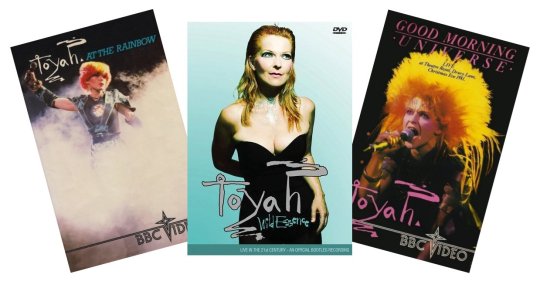
TICKETS ARCHIVE
ALTERNATIVE DOMESTIC & FOREIGN RELEASES
All SINGLES Related Links
All COLLABORATIONS Related Links
All COMPILATIONS Related Links
All LIVE ALBUMS Related Links
"SHEEP FARMING IN BARNET" TO "LOVE IS THE LAW" Related Links
"MINX" TO "POSH POP" Related Links
THE HUMANS
3 x CONCERT VIDEOS (2011 & 2015)
Noise In Your Head (Box Set)
4 x COLOURED VINYL (2020)

(Full Scans) PLUS Download Links to the Sheet Music
Sheep Farming In Barnet
The Blue Meaning
Anthem
The Changeling
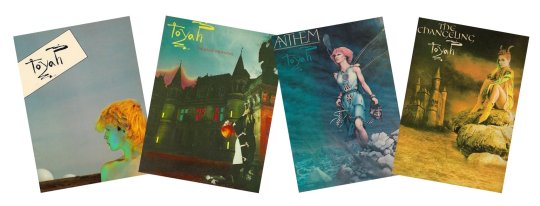

(Full Scans)
Anthem Tour (1981)
Good Morning Universe (1981)
The Changeling Tour (1982)
Mini Tour (1982)
Rebel Run Tour (1983)


1970s & 80s
1990s, 2000s, 2010s
2011 - 2020
2021 -

(Full Scans)
Toyah Official Annual (1982)
Toyah By Mike West (1982)
Toyah By Gayna Evans (1982)
BOOKS WRITTEN BY TOYAH
Living Out Loud (Autobiography) (2000)
Diary Of A Facelift (2005)


MAGAZINE ARTICLES
MAGAZINE COVERS
RECORD AND TOUR MAGAZINE, NEWSPAPER AND ONLINE
ADVERTS & POSTERS (1979 - 2023)
TOYAH IN SMASH HITS (1979 - 1985)
OFFICIAL FAN CLUB (Intergalactic Ranch House & Tellurian)
COVERS AND FANZINE COVERS Toyahzine by Laura Marsh (1980 - 1981)
and Toyah Magazine by Simon & Denise June (1982 to June 1984)
PRESS ARCHIVE
1978 - 1980, 1981 - 1982, 1983 - 1984, 1985 - 1986, 1987 - 1988,
1989 - 2001, 2002 - 2003, 2004 - 2007, 2008 - 2009, 2010 - 2019,
2020 -


FILMS, TV SERIES AND ONLINE SHORTS (1978 - 2017)
MUSIC PERFORMANCES & INTERVIEWS (1979 - 1985)
DOCUMENTARIES & INTERVIEWS
ATV Documentary (1980)
This Is Your Life (1996)
Life And Times Of (2000)
Rock Legends (2003)
TV, RADIO AND ONLINE
FEATURE LENGTH VIDEO & AUDIO
1981 - 1985
1991 - 2019
2020 - 2021
2022 -
TV & ONLINE COMPILATIONS OF SHORT CLIPS AND
A SELECTION OF TV APPEARANCES (FULL EPISODES)
(1977 - 2020)
(2022 -)
TV SERIES AVAILABLE ON DVD
FILMS AVAILABLE ON DVD & STREAM


GALLERIES
1970s
1980
1981
1982
Other Galleries and Wallpapers
MY REVIEWS & ARTICLES (In Toyah Fanzine by toyah.net)
OFFICIAL PUBLICITY AND FAN CLUB PHOTOS
FAN COLLAGES By Arne Buhrdorf
TOYAH's BLOG ARCHIVE (2007 - 2023)
TOYAH DOLLS
TOYAH MAKE-UP (1982)


The Interview Archive Features Site
The Interview Archive MAIN PAGE
Visit our Youtube Channels
ToyahFanVideos
AllToyah

0 notes
Text
A-T-3 081 Roy Ayers - Chicago
This is the third instalment of my uk centric look at the history of reissues in the age of Netflix, Spotify, Record Shop Day, and reissues making up 74% of all US album sales
Part 3 begins with DJs. Journeys By DJs was a mix series that began in 1993 each one by a different DJ, Coldcut’s 1995 70 Minuets Of Funk was an especially popular edition. The same year BBC Radio 1 began its Essential Mix feature, this became a CD series in 1995. !K7’s DJ-Kicks series also began in 1995, then later in 1999 the DJ compiled Back To Mine series began followed by Another Late Night in 2001
What was interesting about some of these mix collections was the range of music they collected, it wasn’t all the latest releases they could contain old reggae records, soul, funk, folk, psyche, prog… often rare and highly sought after
In 1995 Harmless began its label. They released DJ led compilations like Norman Jay’s Philadelphia retrospective, house music artist anthologies which brought together 12” singles originally on different labels. These were packages of collectible records. A personal favourite of mine was 1997’s Jumpin’ disco collection, the hook for this series was many of the tracks had been sampled by house and dance music artists. Samples and the usage of old records on films and adverts was the subject of Harmless’s popular (albeit a bit cheap and nasty imo) Pulp Fusion series
The popularity of the Pulp Fusion series and similar packages on Harmless and other labels I’m about to look at led to the Demon Music Group (parented by the BBC) who own huge legacy catalogues releasing similar styled collections at budget prices, collections of female soul singers for instance or The Best Of Bobby Womack’s The Poet Years
Harmless released the Africa Funk compilation in 1998, a year later Club Africa was put out by a new label Strut. Strut was “dedicated to unearthing long lost gems of dance music’s past.” They released a few DJ compiled compilations like Ashley Beedle’s Grass Roots, and label anthologies like Soul Jazz, but they also got licences for official reissues like Tony Allen And Africa 70 and Oneness Of Juju. Strut also came up with the Disco Not Disco genre
Strut also launched their Music For Dancefloors series which delved through the archives of Library Music labels like KPM, Chappell, Bosworth
Trunk Records was begun in 1996 by Johnny Trunk. The first three releases were compiled from the Bosworth Music catalogue, the forth was a reissue of The Wicker Man soundtrack. What was different about Trunk was the focus wasn’t on what was popular with DJs or collectors of dance music, Trunk reissued soundtracks, psyche music, and oddities
Similar to Trunk is Finders Keepers that came out of Twisted Nerve records. Andy Votel got help from Gerard Short who launched Jazzman in 1998 to get Twisted Nerve Going but it’s reissue label Finders Keepers which is the parent label. I was in Manchester when Andy Votel began the psyche DJ sets that became the staple of Finders Keepers and went to many of those parties
Soul Brother began in 1998, it’s run by the Prangell brothers and priorities funk and soul reissues, they reissued James Mason’s Rhythm Of Life album in 1999 and in 2001 the first of two Leroy Burgess anthologies. The label Barely Breaking Even was named after the Leroy Burgess classic. It began in 1996 with the DJ series Stop And Listen. In 2003 BBE release in association with Rapster, Roy Ayers - Virgin Ubiquity (Unreleased Recordings 1976-1981), which circles back to the Urban reissues of the 1980s. Royal Ayers’ 1983 album Silver Vibrations was reissued by BBE in 2019, on it is Chicago
youtube
1 note
·
View note
Text
Download 2pac dear mama mp3

#Download 2pac dear mama mp3 download
#Download 2pac dear mama mp3 free
Over the sound of G-Funk, the two then-biggest rappers in the world displayed all of their thug bravado. Snoop Dogg Tupac traded verses with fellow Deathrow label-mate Snoop Dogg on one of the standout songs from his 1996 album 'All Eyez On Me'. The song which introduced Tupac to the world, was about a 12-year-old girl who became pregnant by her cousin and threw the baby in the trash. 'Brenda's Got A Baby' Taken from his 1991 debut album '2Pacalypse Now', the thought-provoking 'Brenda's Got A Baby' was actually inspired by a real story he read in the New York Times. The track, which was released as a posthumous single from his 2001 album 'Until The End Of Time, features powerful interview excerpts from the rapper. 'Letter 2 My Unborn' Tupac displayed his amazing storytelling over a fast-paced song dedicated to his unborn child. The piano-based instrumental later became iconic in Hip-Hop and soundtracked countless freestyles. 'Ambitionz Az A Ridah' When Tupac was released from prison in 1995, he reportedly went directly to the studio and recorded his hard-hitting single 'Ambitionz Az A Ridah'. As a result of his impending incarceration for rape, he released his most thoughtful and personal album yet - 'Me Against The World' - which included a song dedicated to his mother. 'Dear Mama' In 1995, Tupac made history as the first ever artist to top the Billboard Charts while in prison. Chillingly, the official music video showing himself getting shot and going to heaven, was recorded one week before he was actually shot and killed in Las Vegas. 'I Ain't Mad At Cha' Sampling 1983 song 'A Dream' by DeBarge, the track was actually recorded on the same day Tupac was released from prison in 1995. The track, which samples Elton's 1981 song 'Indian summer', features the rapper discussing social politics over powerful production. Elton John Pac's only UK No.1 single came courtesy of a posthumous collaboration with Elton John in 2005. The rappers dream about a hypothetical heaven dedicated to thugs and gangsters, on the track taken from his posthumous 2002 album 'Better Dayz'. Phoenix Tupac showed his soulful, introspective side on acoustic classic 'Thugz Mansion' featuring Nas.
#Download 2pac dear mama mp3 download
Play and download Dear Mama 2pac Audio mp3 songs from multiple sources at Mp3coop.live.
#Download 2pac dear mama mp3 free
Check all videos related to tupac dear mama mp3 freeload. His crew The Outlawz also provide hard-fitting feature verses. 'Hail Mary' The final track from Tupac’s fifth album ‘The Don Killuminati’, hears the rapper torn between the street life and salvation, over chilling graveyard bells and a heavy bass line. Intended as a response to Biggie's 'Who Shot Ya', Pac displayed his signature aggression on the track. The Outlawz After being shot in 1994, Tupac retaliated by releasing one of the biggest diss tracks in Hip-Hop history, directed at Biggie Smalls and The Junior Mafia. The pair rap about Tupac's adopted city of California over some classic bass-lead production. Dre for one of the most iconic Hip-Hop songs of the 1990s. Dre Tupac linked up with fellow Deathrow label-mate Dr. The iconic song, which is an interpretation of Bruce Hornsby's 1986 hit 'The Way It Is', hears Pac rhyme about social justice over a piano sample. Talent Despite being released after Tupac died, 'Changes' remains one of the biggest hits in his catalogue. We have attempted to narrow down 20 of Tupac Shakur’s greatest songs, spanning albums such as ‘Me Against The World’, ‘All Eyez On Me’, ‘The Don Killuminati: The 7 Day Theory’ and more. And despite being tragically murdered at the age of 25, the ‘California Love’ rapper left behind an unrivalled collection of music, including an astonishing 11 platinum albums.

1 note
·
View note
Photo

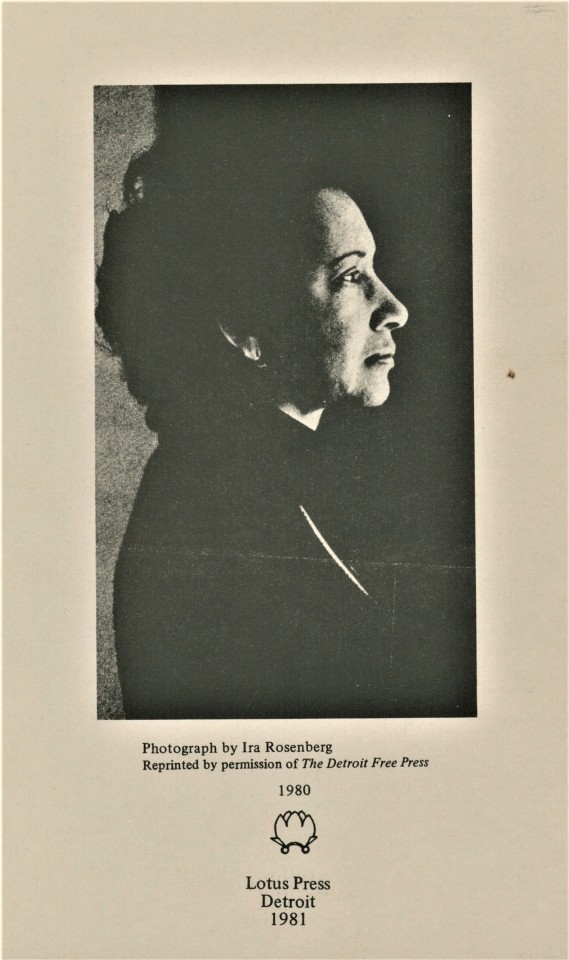

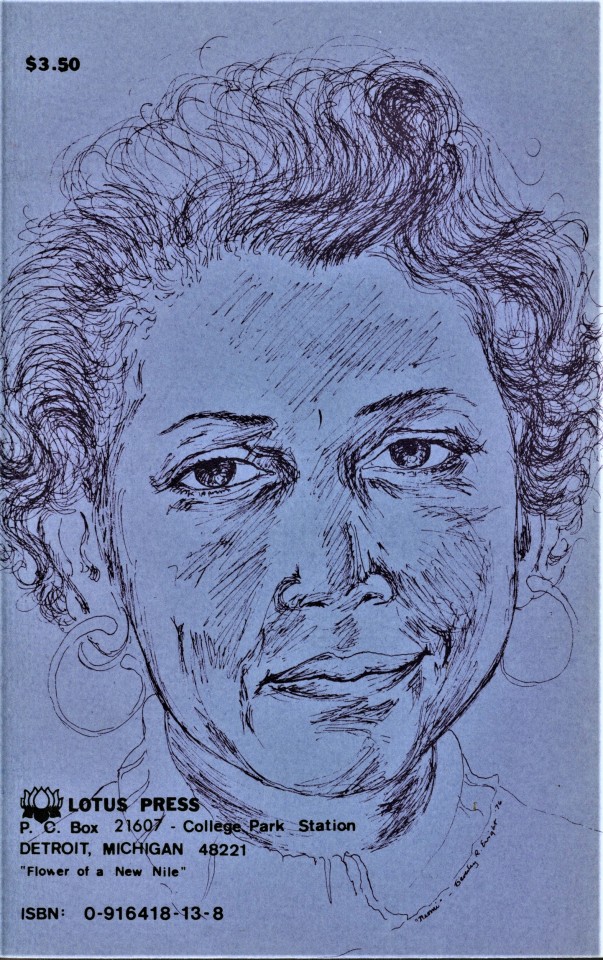


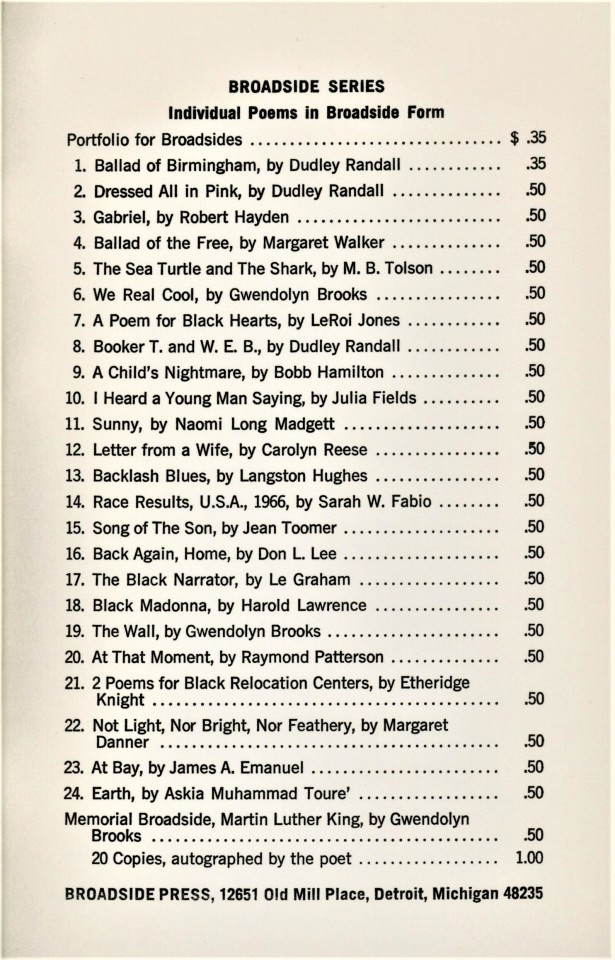



Celebrating Black History Month
We close out Black History Month with some works by the founders of two of the oldest black-owned presses in the United States! Facing difficulties getting her fourth poetry collection published, poet, author, educator, and publisher Naomi Long Madgett saw the need for a press that promoted African American writers, and in 1972 established the Detroit Lotus Press in response, specializing in the publication of books of poetry. Madgett was not alone in recognizing this lack of African American publishers. Poet, editor, and publisher Dudley Randall founded the Detroit Broadside Press in 1965, similarly running his company single-handedly. Broadside Press publications were recognized as beautiful contributions to the Black Arts Movement of the 1960s and 70s, which through activism and art, created new cultural institutions and conveyed a message of black pride.
UWM Special Collections preserves 17 Lotus Press imprints, including a signed 1981 reprint of Madgett’s first collection of poetry, Phantom Nightingale: Juvenilia, printed in an edition of 250 copies. Consisting of Madgett’s early works from 1934 through 1943, the book was originally published in 1941 by the vanity press Fortuny, Inc., days after 17-year-old Madgett graduated high school, but was jeopardized after the company’s scandalous downfall that same year. This reprint includes the author’s foreword explaining her attempt to stay true to the original text while editing. Also displayed here is Madgett’s 1978 self-publication of Exits and Entrances: New Poems, with illustrations by Beverly Rose Enright.
Special Collections holds 45 Broadside Press imprints. Shown here is a first edition of Dudley Randall’s 1968 chapbook, Cities Burning, published by his own Broadside Press. Cities Burning reflects the poet’s urban environment and the politics of his times, and includes a dedication to the first African American director of the Office of School Social Work Service in the Detroit, Michigan Public Schools, Mildred Alexander Ellis, his “Audience of One.”
Lotus and Broadside merged in 2015 to form the Broadside Lotus Press. Representing the close relationship of the two presses before the merger, we present Dudley Randall’s 1983 collection A Litany of Friends: New and Selected Poems, published by Madgett's Lotus Press. In the title poem, “A Litany of Friends,” Randall offers dedications to numerous black writers and friends, including one to Madgett who “assured [him] that [his] work was worthwhile.”
Carrying on the legacies of Naomi Long Madgett, and Dudley Randall, the Broadside Lotus Press honors these two past Detroit Poet Laureate appointees, 2001 and 1981 respectively, by sponsoring the annual national Naomi Long Madgett Poetry Award to recognize and publish an outstanding manuscript by an African American poet.
View more of our Black History Month posts
-- Isabelle, Special Collections Undergraduate Writing Intern
#Black History Month#poetry#Naomi Long Madgett#Detroit Lotus Press#Dudley Randall#Broadside Press#Black Arts Movement#Phantom Nightingale: Juvenilia#Exits and Entrances#Cities Burning#A Litany of Friends#Broadside Lotus Press#African Americans#African American publishers#20th century publishing#Isabelle
75 notes
·
View notes
Text
Jellicle Songs: Order of Introduction
So, the Cats wiki says that, though Munkustrap always gets the first line of the show, the rest of the opening lines in Jellicle Songs For Jellicle Cats can go to any character. But, I’ve noticed that there are a few different patterns that different types of productions use, and that most productions after 2002 use the same one.
Now, there are some lines that almost always go to the same characters, most of them in the first and second verses:
“Are you blind when you’re born” is always Munkustrap’s line.
Outside of the Broadway Revival, Demeter always gets “Can you see in the dark?”
The next two lines go to Skimble and Asparagus, though they can go in either order.
The next three lines go to Chorus Tugger, Alonzo, and Babygriz.
The second verse is also almost always the same. It goes: Jellylorum, Coricopat, Jemima/Sillabub, Chorus Deut. Newer productions have Coricopat and Tantomile say both of their opening lines together instead of each getting a separate one.
In older versions, where the twins aren’t in unison, Tantomile opens the third verse.
“Familiar with candle” is always Jenny’s line. Sometimes Victoria sings it with her and sometimes she doesn’t.
“With book and with bell” is where things start to get complicated:
Pattern 1: London Version
There is a clip of a rehearsal of this number in London in 1993 or 1994, a few years before the VHS was done. Though the VHS is mostly London-based, the line distribution differs wildly from what was probably still the order onstage in London while the VHS was being filmed.
Now, for the sake of clarity, I’m going to define what the verses are here. The first and second verse are easy to divide, because they’re both followed by a chorus. But, there’s no chorus between the third and fourth verses. I consider them two separate verses, because the melody repeats.
“Can you ride on a broomstick to places far distant?” opens the third verse.
“Are you mean like a minx? Are you lean like a lynx?” opens the fourth verse.
There are a few lines in these verses that always go to the same character:
“Are you Whittington’s friend?” is Bomba’s line.
“Were you there when the pharaohs commissioned the Sphinx?” is Cassandra’s line.
Not even the Broadway Revival, which seems to delight in breaking from tradition for the sake of it, changes this.
Now, back to the London Pattern.
The lines that differ are:
“With book and with bell”
“The Pied Piper’s assistant”
and every line following it until Cassandra’s line at the end.
So I don’t have to retype entire lines over and over, I’ll nickname the lines:
Book and Bell
Pied Piper
Heaven and Hell
Mean Minx
Lean Lynx
Keen to Be Seen
In London, but the early 90s, and in London-based productions, the order is:
Book and Bell: Admetus/Plato
Pied Piper: Rumpleteazer
Heaven and Hell: Mistoffelees
Mean Minx: Mungojerrie
Lean Lynx: Usually Carbucketty/Pouncival, but this can also go to Bill Bailey/Tumblebrutus.
Keen to Be Seen: Traditionally Etcetera, though the line usually goes to whichever cat will be swinging on the trapeze. In the original London production, that was Etcetera. Most productions don’t include Etcetera (what is wrong with these people?), so the line gets passed around. Productions that include Electra will usually give the line, and the trapeze, to her. Productions that don’t include either queen kitten usually give the line to Bill Bailey/Tumblebrutus, but he’s sometimes switched out with Carbucketty/Pouncival.
The VHS only has two of those lines follow the London pattern. There is a reason for some of this, however. It can mostly be explained by:
Pattern 2: Broadway Version
There’s actually a surviving video recording of the original Broadway cast singing Jellicle Songs on YouTube. A lot of the lines are said offscreen, but I’ve been able to piece together who probably sang what based on other Broadway-based shows that followed the same pattern.
Book and Bell: Mungojerrie and Rumpleteazer. Now, the original Broadway cast cut these characters, so what they most likely did here was have Carbucketty and Etcetera, the two characters who were cut when Jerrie and Teazer were added, sing those lines. In the Mexico and Buenos Aires versions, both Broadway-based, Jerrie and Teazer sing the lines and you can hear two voices in the Broadway clip. This is probably where they got it from.
Pied Piper: Mistoffelees. I rarely find productions where this line is said offscreen. Misto is a camera magnet.
Heaven and Hell: Plato
Mean Minx: Pouncival
Lean Lynx: Victoria. Only London-based productions had Victoria be completely mute at this time. Others gave her a single opening line to herself, and then nothing for the rest of the show.
Keen to Be Seen: Tumblebrutus. Like with Etcetera, he was the original trapeze cat.
The VHS used the Broadway pattern for Misto’s line only. The VHS Misto was played by Jacob Brent, who was playing Misto on Broadway at the time. Fergus Logan, who was playing Misto in London at the time, played Tumblebrutus in the VHS, which is why he gets Heaven and Hell in that version and that version only. Both actors were given the opening lines they used onstage.
The VHS didn’t borrow anything in the opening from:
Pattern 3: Vienna Version
But, I’m talking about it anyway. Since we have a full recording of the Vienna production and two productions based on it, we can observe that most of the line distribution in the three versions differs from both London and Broadway, but are identical to each other.
Jennyanydots says the entire “Familiar with candle? With book and with bell?” by herself.
Pied Piper: Pouncival. This one was really hard to figure out, because he only sang the line onscreen in the Zurich bootleg, which wasn’t zoomed in. Vienna and Paris, both professionally shot, didn’t show Pouncival saying the line, instead focusing the camera on Mistoffelees. In Broadway-based productions, which these technically are, Misto got this line. But, Vienna-based Mistos are mute. Misto is more officially mute than Victoria in these productions, though Zurich Misto does say “Old Deuteronomy?” at the beginning of that number. He can speak, but he can’t sing, and there are very few spoken lines in the show. In Vienna and Paris, he’s completely mute and has to mime to the twins so they can speak for him.
So, since Misto is mute, Pouncival, usually played by his understudy, says his line while Misto is the one attracting attention to himself.
Heaven and Hell: Plato. This didn’t change from Broadway.
Mean Minx: Tumblebrutus. Now that Pouncival has Misto’s line, Tumble steps in on Pouncival’s line.
Lean Lynx: Victoria, also unchanged from Broadway.
Keen to Be Seen: Mungojerrie and Rumpleteazer. Mute Misto created a domino effect of line changes. Pouncival gets Misto’s line, so Tumble gets Pouncival’s line, so Jerrie and Teazer get Tumble’s line, so Jenny sings both her line and their line.
Outliers:
I’ve mentioned the Broadway Revival being weird already, but the other standouts are Hamburg and the VHS. Hamburg and the VHS are the only productions to give Teazer the “Lean Lynx” line. Having Jerrie and Teazer have lines that play off of one another is so obvious that I’m surprised by how rarely it happens.
Also, Teazer was offscreen when she said her line in Hamburg. I’m not entirely sure if it was her. Either Victoria has Book and Bell and she has Lean Lynx, or Teazer has Book and Bell, which she normally shares with Jerrie, and Victoria has Lean Lynx, her usually Broadway line. I actually couldn’t tell, so this might not even be a thing.
The main VHS outlier is Electra with the “Book and Bell” line. I haven’t seen any other production do this and it probably wasn’t what London was doing at the time. The way they’d arranged everything else, you would think they would’ve given the line to Plato. You’d also think they’d give Pouncival Lean Lynx. Perhaps they wanted to try something new, and giving Jerrie and Teazer these lines works too well for no one to do it.
These Modern Productions:
First, because Broadway and Vienna had Jerrie and Teazer share a line while Coricopat and Tantomile had separate lines, and newer productions have the Psychic Twins sing their lines together, there’s an interesting reversal. Earlier shows put emphasis on Coricopat and Tantomile as separate characters, while sometimes having Jerrie and Teazer act in unison. In newer shows, the opposite is true. And the opposite is always true, because nearly every production uses the London Pattern.
I went through my entire bootleg/pro-shot collection and searched the Cats wiki and YouTube for clips from other shows to compare as many Jellicles Songs as I could find. Around half of them are from the era between 1981 and 2002, when the original London production was going, while the other half are from after that.
Japan and the Broadway Revival broke from tradition to such an extent that I couldn’t factor them in. Japan has its own traditions and the Broadway Revival saw itself as a reset of the show, so it tried to be as different from what came before as possible.
Hamburg and the VHS are also outliers, but they have more overlap with other productions than the above two. The above two are the only versions to have a character other than Demeter get the second line. They break from any pattern immediately. Hamburg and the VHS mostly keep their pattern-breaking to the third and fourth verses.
So, the Older Productions are:
London
Broadway
Vienna
Paris
Zurich
Mexico
Buenos Aires
Hamburg
The 1998 VHS
US Tour V (Though all the bootlegs are from 2005 or later, it was still a Broadway-based production that started up in 2001 as a continuation of the original Broadway)
The Newer Productions:
London Revival
UK Tour 2013
UK Tour 2016
Berlin
German Tent Tour
Madrid
Moscow
Dutch Tour
Out of the Older Productions, only the London production used the London Pattern. Broadway, Mexico, and Buenos Aires all used the Broadway Pattern, with Hamburg also doing a very similar thing. Based directly on Broadway, US Tour V also used the Broadway pattern, despite being newer than the other versions in this category. The VHS was a hybrid of London and Broadway. Vienna, Paris, and Zurich used the Broadway pattern
London: 1
Broadway: 4
Vienna: 3
Other: 2
There’s a fair amount of diversity with a slight lean towards the Broadway Pattern. The productions that use the Broadway Pattern exactly are all from the Americas. Different regions of Europe have their own variations.
As for the newer productions, excluding the Broadway Revival, they all use the London Pattern. Every single one of them. Three of the productions are from the UK, so that’s to be expected, but the pattern is now everywhere. Berlin was partially based on Hamburg and started in 2002, right as the original London was closing, but it uses the London Pattern. Other German productions followed suit, taking more inspiration from London than from earlier German language productions. The first production in Dutch, Amsterdam, was Vienna-based, but the Dutch Tour is London-based.
Honestly, I’m kind of disappointed. There’s nothing wrong with the London Pattern or London-based productions, but do they all have to be like that? I’d prefer for there to be some diversity. The Broadway Revival provides that, since America always has to be different from everyone else, but I honestly don’t like the Revival arrangement. In earlier versions, each line went to a different character, while the Broadway Revival gives some characters multiple lines, leaving characters who’d normally have lines with nothing. Skimble has his line, but he also gets Keen to Be Seen. Jellylorum gets both her line and Jenny’s line. Sillibub gets her line and Lean Lynx. Munkustrap has three lines to himself.
So, though I appreciate the Broadway Revival for giving us something different, I wish it could provide a good different
tldr: Every production in the western world is either London or Blankenbuehler and that’s a bit boring.
#jellicle songs for jellicle cats#cats london#cats obc#cats vienna#cats paris#cats zurich#cats hamburg#cats 1998#cats mexico 1991#cats buenos aires#cats 2014#cats uk 2013#cats uk 2016#cats troika#cats berlin#cats german tent tour#cats madrid#cats moscow#cats dutch tour#cats 2016#andy blankenbuehler is bad at cats#the other shows are all fine#i just get bored easily#this is a long one
27 notes
·
View notes
Text
Original Versions of Songs You Didn’t Know were Covers
Originally published for Geeks and Beats, August 2017.
https://www.geeksandbeats.com/2017/08/songs-didnt-know-covers/
I love a well-done cover song, and I especially love a well-done cover that deviates from the original. There’s something endlessly fascinating about how two different people can arrange such dramatically different interpretations of the same source material. What makes this especially fun is when you discover that a song you’ve been enjoying for years is itself a reinterpretation. Sometimes it even goes a step further, and a song that you knew as a cover turns out to be a cover of a cover. Researching this list became a much more involved “rabbit hole” than I ever anticipated, and I am delighted to share my findings with you. I’m confident that, like me, you’ll have more than a few “whoa, I didn’t know that!” moments.
Bruce Springsteen – Blinded by the Light
youtube
When a WatchMojo video got me digging into this awhile back, this was the one that surprised me most. This is one of those songs that I feel like I’ve been aware of for as long as I’ve cared about music. So it was a bit of a shock to discover in my 40s that, not only is it a cover, but it was originally by The Boss. There are differences in the arrangement and the lyrics, but the Manfred Mann version is generally considered the definitive rendition.
Tina Turner – Don’t Turn Around
youtube
While “Blinded by the Light” was the big surprise on my first dive into this topic, this next one blew me away even moreso. Ace of Base’s third most successful single was originally a Tina Turner song, the B-side of her 1986 single “Typical Male”. Bonnie Tyler, whose repertoire of covers is expansive and impressive, also did her own interpretation on 1988’s Hide Your Heart.
I’ve Got My Mind Set On You – James Ray
youtube
Time for a little history about “Weird Al” Yankovic. In 1988, Al released his album Even Worse. The title had two meanings. First of all, the lead single was “Fat”, a parody of Michael Jackson’s “Bad”, and the album cover was also a direct parody of Jackson’s Bad cover. In other words, since Jackson was declaring himself to be “Bad”, Al decided he was “Even Worse”. Second, all of the other parodies were of covers that had recently been hit singles, by Tiffany, Billy Idol, Los Lobos, and George Harrison.
The last one was the one that surprised me. Harrison’s most solid 80s hit was actually a cover. I owned 45s of the originals of all the others, but I had never heard James Ray’s original of “I’ve Got My Mind Set On You” (which Al turned into “(This Song’s Just) Six Words Long“).
The Tide is High – The Paragons
One of Blondie’s most distinctive qualities was, and still is, a blending of several sounds and moods. As such, this reggae ditty, which was their third #1 single on the Billboard Hot 100, didn’t raise many eyebrows. So, few at the time knew that it was a cover of a 1966 rocksteady song by The Paragons. Although, the fact that the gender-swap screwed up the rhyme scheme could have been a clue.
Torn – Ednaswap
https://www.youtube.com/watch?v=9OoEdfB7l18
This one’s a little weird. Shortly after Natalie Imbruglia had her breakthrough hit with “Torn” in 1997, there was a short-lived minor controversy. Apparently, some people were upset when they found out that Imbruglia didn’t write the song. It was a cover of a 1995 song by a relatively unknown alternative act called Ednaswap. Nobody claimed had that she wrote the song, however, and there was nothing new about singers having a cover be their first hit. So the “controversy” was quickly reduced to a footnote, whose most prominent documentation is a mention on Pop-Up Video.
Adding to the weirdness, Ednaswap’s “original” wasn’t technically the first recording of the song. Two years before they got around to releasing it, a Danish translation,“Brændt” (“Burned”), was released by Lis Sørensen.
Girls Just Wanna Have Fun – Robert Hazard
https://www.youtube.com/watch?v=5aLNwOxPsjg
I almost didn’t include this one because, quite frankly, the original is awful. And, let’s be real, there’s something creepy about a guy breathily singing about what girls want. Thankfully, Hazard’s recording never got past the demo stage, so I’ll choose to consider Lauper’s version “technically a cover but sort of not really”.
Downtown Train – Tom Waits
https://www.youtube.com/watch?v=rLtZKkCIVmI
If you asked a random sampling of people around you, there’s a good chance that many of them wouldn’t be able to name a Tom Waits song. On the other hand, it’s almost a guarantee that they’re familiar with at least one of his songs, but covered by someone else. The Eagles, Alison Krauss, Sarah McLachlan, Bruce Springsteen, and The Ramones are among the many big names to contribute to this. Heck, actress Scarlett Johansson recorded an entire album of Tom Waits songs (it was kind of awful, but I digress).
One of the most successful Waits covers is Rod Stewart’s “Downtown Train”. The original was a standout track and minorly-successful single from Waits’ 1985 masterpiece Rain Dogs. Stewart’s 1991 cover starts off with a similarly restrained sound, but gradually swells into a much “bigger”, almost celebratory sound.
Piece of My Heart – Erma Franklin
https://www.youtube.com/watch?v=L0QAxIKf8G4
First off, the more well-known recording, with Janis Joplin on vocals, is properly credited to her band Big Brother and the Holding Company. Second, covers generally draw from that 1968 version, but the original was by Erma Franklin (Aretha Franklin’s older sister). Faith Hill’s 1994 atrocity seemed to be an attempt to destroy the song’s legacy, but Melissa Etheridge managed to restore it a little bit in 2005, even though it was a clumsy attempt at a comeback for Etheridge.
The First Cut is the Deepest – P.P. Arnold
https://www.youtube.com/watch?v=y1-g5VG2pWg
This is one of my favourites. With many of the entries on this list, it’s fun to play the original for someone and watch their face as they slowly realize what they’re hearing. P.P. Arnold’s original recording of “The First Cut is the Deepest” (written by Cat Stevens) also happens to be a fantastic song in its own right.
In 1977, Rod Stewart (him again?) released what most would consider the definitive version, and in 2003 Sheryl Crow covered it as one of two new songs recorded for her best-of collection.
Nothing Compares 2 U – The Family
https://www.youtube.com/watch?v=_ZlzN0Gtpp8
In the 80s, there were a lot of Prince side projects and spin-offs. Morris Day and The Time may be the most memorable, with their mega-hit “Jungle Love“. Wendy & Lisa, Vanity 6, and Apollonia 5 also enjoyed a little time in the spotlight. One of the lesser-known projects, however, was The Family. The Family was often tasked with bringing life to songs that Prince wrote but wasn’t interested in doing himself. So even if you knew that Prince wrote Sinéad O’Connor’s 1990 breakthrough hit “Nothing Compares 2 U“, you might not have known that The Family had recorded it 5 years prior.
Prince would eventually record a live version as a duet with Rosie Gaines, which was included on the various iterations of his 1993 compilation The Hits. Also included on this compilation were Prince’s originals of “I Feel 4 U” (covered by Chaka Khan in 1984), and “When U Were Mine” (covered by Cyndi Lauper in 1983).
Killing Me Softly – Lori Lieberman
youtube
In 1996, the Fugees released their breakthrough mega-hit, “Killing Me Softly“. Not everyone knew it was a cover of a 1973 Roberta Flack song, but many did. Even fewer knew, however, that Flack’s rendition was itself a cover. The original, by Lori Lieberman in 1972, was a soft acoustic rendition of a poem. “His song” was Don McLean’s “Empty Chairs”.
The first cover could have turned out quite differently; according to Wikipedia:
Helen Reddy has said she was sent the song, but “the demo… sat on my turntable for months without being played because I didn’t like the title”.
Roberta Flack’s successful 1973 cover is still soft, but with some defining chord changes, and a slightly more soulful sound.
Further mutating the tune, The Fugees laid down their hip-hop version in 1996, to much acclaim.
If you poke around YouTube looking for versions of this song, you’ll probably find about a dozen copies of a crooner version credited to Frank Sinatra. It does kind of sound like The Chairman, but he never actually recorded it. That’s Perry Como, from his 1973 album And I Love You So.
Some Guys Have All The Luck – Persuaders
https://www.youtube.com/watch?v=W3NWbvFsBVo
First released in 1973 by R&B group The Persuaders, Rod Stewart’s cover of “Some Guys Have All the Luck” served as one of the important hits of his 80s comeback (and his third time appearing on this list, what is it with this guy and covers?) In between those two versions, Robert Palmer also recorded his own version, with significantly altered lyrics and arrangement. Palmer’s version is probably the strangest, kind of a gritty new wave thing, reminiscent of Pete Shelley’s “Homosapien“.
There have been several other covers, including a gender swapped country version. Of special note is Maxi Priest’s 1987 rendition, which (mostly) returned to the original lyrics and arrangement, but with Maxi’s signature “reggae fusion” sound.
Tainted Love – Gloria Jones
https://www.youtube.com/watch?v=NSehtaY6k1U
When Marilyn Manson covered “Tainted Love” in 2001 for the Not Another Teen Movie soundtrack, it was fairly common knowledge that he was covering a Soft Cell song. Soft Cell’s 1981 arrangement, however, was not the original. American soul singer Gloria Jones’ Motown-influenced version was a B-side for “My Bad Boy’s Comin’ Home”, which failed to make a lasting impression domestically. Jones herself, however, had very much made an impression in England, where she was dubbed the “Northern Queen of Soul”.
Eventually the song entered the radar of the synth-pop duo Soft Cell. Their 1981 version became their only major hit in North America, and one of the defining songs of the 80s.
Side notes and honorable mentions:
You might already knew that The Isley Brothers recorded “Twist and Shout” a year before The Beatles, but did you know that a group called The Top Notes recorded it a year before that?
“I Love Rock n Roll” by Joan Jett & the Blackhearts, arguably one of the most ubiquitous and recognized songs of the modern era, was originally released by The Arrows in 1975.
Animotion’s “Obsession”, unofficial theme song of the fashion world for more than 30 years, was originally recorded by Michael Des Barres & Holly Knight.
Madonna’s “Ray of Light” was adapted from “Sepheryn” by Curtiss Maldoon, though it’s not a direct cover.
Led Zeppelin have a storied history of borrowing, adapting, and straight-up stealing. A cursory Google search will provide many articles and videos discussing this, but the two examples which I think best fit the theme are “Dazed and Confused”, originally by Jake Holmes, and “Stairway to Heaven”, adapted from “Taurus” by Spirit.
Johnny Cash’s “Folsom Prison Blues” was adapted from “Crescent City Blues“, written by Gordon Jenkins and sung by Beverly Mahr. Also, more than half the songs on Cash’s 5 American Recordings albums are reinterpretations of a diverse selection of songs.
#music#cover songs#madonna#weird al yankovic#tom waits#beatles#cyndi lauper#bruce springsteen#killing me softly#twist and shout#johnny cash
6 notes
·
View notes
Text
Remington Model 510 Serial Number

Where is the serial number on a Remington 511? Only the early 511's had serial numbers. It was stamped on the underside of the barrel, just in front of the forearm. It is indeed a 1941 or a 1963 model. Where is the serial number on a scoremaster 511? The Scoremaster 511 has a 25' barrel, a one piece hardwood stock, and a blued metal finish. There are no serial numbers on the model 510s. Serial numbers weren't required until 1968 the model 510 was last produced in 1962. The 478 is in the serial # location Rem stamped on the M/510 through 1941. Your date code might be LH. The L would mean February. The H would stand for 1939. According to the book Remington.22 Rimfire Rifles by John.
DoubleTap
Administrator
Posts: 680
Joined: Sun Mar 13, 2011 1:38 pm
Location: NY
Posted: Thu Mar 24, 2011 9:00 pm
Here is some information that you can get from you serial number after 1921
Remington's manufactured after 1921 have a code located on the left side of the barrel near the frame that identifies the year and month of manufacture. The following letters correspond to the months of the year
Month Codes: (first letter)
B - L - A - C - K - P - O - W - D - E - R - X
1 - 2 - 3 - 4 - 5 - 6 - 7 - 8 - 9 - 10 - 11 - 12
Year:---------Code: (second and/or third letters)
1930----------Y
1931----------Z
1932----------A
1933----------B
1934----------C
1935----------D
1936----------E
1937----------F
1938----------G
1939----------H
1940---------- J
1941---------- K
1942---------- L
1943---------- MMZ
1944---------- NN
1945---------- PP
1946---------- RR
1947---------- SS
1948---------- TT
1949---------- UU
1950---------- WW
1951---------- XX
1952---------- YY
1953---------- ZZ
1954---------- A
1955---------- B
1956---------- C
1957---------- D
1958---------- E
1959---------- F
1960---------- G
1961---------- H
1962---------- J
1963---------- K
1964---------- L
1965---------- M
1966---------- N
1967---------- P
1968---------- R
1969---------- S
1970---------- T
1971---------- U
1972---------- W
1973---------- X
1974---------- Y
1975---------- Z
1976---------- I
1977---------- O
1978---------- Q
1979---------- V
1980---------- A
1981---------- B
1982---------- C
1983---------- D
1984---------- E
1985---------- F
1986---------- G
1987---------- H
1988---------- I
1989---------- J
1990---------- K
1991---------- L
1992---------- M
1993---------- N
1994---------- O
1995---------- P
1996---------- Q
1997---------- R
1998---------- S
1999---------- T
2000---------- U
2001---------- W
2002---------- X
Using barrel codes (such as those listed above) to date the manufacture are reliable on Remington rifles, as the company rarely changed barrels on a customer's rifle.
Using these barrel codes to date a shotgun is somewhat unreliable, as shotgun barrels are often interchanged at random. One needs to be sure that the barrel is original to the gun before trusting the Barrel Code listing, above.
(*) On 8/9/99, stopped stamping the barrels with the date code. They continued to mark the date code on the end flap of the shipping box. They resumed stamping the date code on the barrel on 10/1/01.
Also http://oldguns.net/sn_php/remdates.php

About Us Hours of Operation: Monday-Friday 8:00 AM – 5:00 PM Eastern Standard Time We provide original gun parts, collectible firearms, and related merchandise with integrity, quality, and service, which are the strengths of our business. We focus primarily on original factory manufactured parts with minimal wear for obsolete firearms, but also stock parts for modern firearms as well as a limited number of reproduction parts. Our company will continue making changes to improve customer service, the ease of ordering, and the quality of merchandise for you, our customers. Thank you for visiting our website.
Remington Model 510 Targetmaster Rimfire. Rivet is for the Remington model 510-X Targetmaster bolt. Do not have a show room or location for the public. A Remington 22 rifle, model 510 SB, ‘Targetmaster’, no serial number, mo-skeet-o-bore smooth bore, single shot, bolt action. • Ohio residents will be able to.


Notice: We are a 'Mail Order Only' company and do not have a show room or location for the public to pick up merchandise.
0006 0006 Answer Do you have the correct model #? 0006 0006 I am not aware of any Remington.22 rifle with a 672 designation. Unless there is a very late model from Remington with th at model number, I believe you are referring to their model 572 rifle.
Remington Model 510 Parts
The M/572 was a PUMP repeater that was initially produced in the 1950's, in various grades and is, or was until the last year or two, still being manufactured. Serial numbers were not required on.22 rifles up until December of 1968, when the infamous 'Gun Control Act of 1968' was passed. If you do indeed actually have a model 572 PUMP rifle, and you can not find the serial number, you most likely have a unit manufactured prior to 12/68, since all M/572 rifles with serial numbers have them very plainly stamped on the side of the receiver. Windows Vista Home Basic 32 Bit Iso Direct Download there.
1 note
·
View note
Text
A: Michaelmas Term. The Colonial, the Postcolonial, the World: Literature, Contexts and Approaches (A/Core Course)
The A course comprises 8 1.5 hour seminars and is intended to provide a range of perspectives on some of the core debates, themes and issues shaping the study of world and postcolonial literatures in English. In each case the seminar will be led by a member of the Faculty of English with relevant expertise, in dialogue with one or more short presentations from students on aspects of the week’s topic. There is no assessed A course work, but students are asked to give at least one presentation on the course, and to attend all the seminars. You should read as much in the bibliography over the summer – certainly the primary literary texts listed in the seminar reading for each week. The allocation of presenters will be made at the meeting in week 0.
Week 1
Theories of World Literature I: What Is World Literature?...What Isn’t World Literature? (Graham Riach)
This seminar will consider what we mean when we say ‘world literature’, looking at models proposed by critics as Emily Apter, David Damrosch, the WReC collective, and others. The category of ‘world literature’ has been in constant evolution since Johan Wolfgang von Goethe popularised the term in the early 19th Century, and in this session we will explore some of the key debates in the field.
Primary:
+ David Damrosch, What is World Literature? 2003
+ ------ What Isn't World Literature, lecture https://www.youtube.com/watch?v=jfOuOJ6b-qY
+ WReC (Warwick Research Collective), Combined and Uneven Development: Towards a New Theory of World Literature
+ Extracts from Johan Wolfgang von Goethe, Karl Marx and Friechrich Engels, Franco Moretti, Pascale Cassanova, Emily Apter and others.
Secondary:
+ David Damrosch, World Literature in a Postcanonical, Hypercanonical Age in Haun Saussay ed, Comparative Literature in an Age of Globalization 2006 pp.43-53
+ Franco Moretti, Conjectures on World Literature, New Left Review 1 2000 54-68
+ Mariano Siskind, ‘The Globalization of the Novel and The Novelization of the Global: A Critique of World Literature’, Comparative Literature 62 (2010) 4: 336-60
Week 2
English in the world/Language beyond relativity (Peter McDonald)
Primary:
+ The Oxford English Dictionary (especially 1989 print edition and online, 2000-)
+ You should also read Sarah Ogilvie, Words of the World: A Global History of the Oxford English Dictionary (2012)
+ Florian Coulmas, Guardians of the Language (2016)
+ Perry Link’s short essay ‘The Mind: Less Puzzling in Chinese? (New York Review of Books, 30 June 2016), which is available via: https://www.nybooks.com/daily/2016/06/30/the-mind-less-puzzling-in-chinese/?utm_medium=email&utm_campaign=NYR%20Krugman%20on%20King%20Als%20on%20Martin%20Cole%20on%20police&utm_content=NYR%20Krugman%20on%20King%20Als%20on%20Martin%20Cole%20on%20police+CID_9def725d3263b14fe6dce4894ed64907&utm_source=Newsletter&utm_term=The%20Mind%20in%20Chinese
Secondary:
+ Jacques Derrida, Monolingualism of the Other, or The Prosthesis of Origin, trans. Patrick Mensah, 1998 (French edition, 1996)
+ Charles Taylor, The Language Animal (2016)
Preparation
A (2 students: position papers, maximum 1000 words, on ONE of the following. Please ensure both topics are covered. Also bring along a handout with your key quotations—copies for the entire group) 1. Explain the significance of the epigraphs from Glissant and Khatibi for Derrida’s argument and analysis in Monolingualism. 2. Explain Taylor’s distinction between ‘designative-instrumental’ and ‘expressive-constitutive’ theories of language.
B (all remaining students: single-sided A4 handout—copies for the entire group) Browse the OED, especially using the online feature that allows you to group words by origin and/or region, and select ONE loanword from a non-European language. On one side of an A-4 sheet give an account of the word, explaining why you think it has particular significance in the long history of lexical borrowing that constitutes the English language and the shorter history of the linguistic relativity thesis
Week 3
The (Un)translatability of World Literature (Adriana X. Jacobs)
This seminar will examine the role of translation in the development of the category of world literature with a particular focus on the term “translatability.” We will consider how translation into “global” English has shaped contemporary understandings of translatability and how to reconcile these with the more recent turn to “untranslatability” in literary scholarship. To what extent are the parameters of world literature contingent on a translation economy that privileges certain languages, authors and texts over authors? What room is there in current configurations of world literature for works that “do not measure up to certain metrics of translational circulation” (Zaritt)?
Primary:
+ Emily Apter, Against World Literature: On the Politics of Untranslatability (New York: Verso, 2013)
+ “To Translate,” in Dictionary of Untranslatables: A Philosophical Lexicon, Barbara Cassin, ed., ed. and trans. Emily Apter, Jacques Lezra, and Michael Wood (Princeton: Princeton UP, 2014): 1139- 1155. (read introduction online: http://press.princeton.edu/titles/10097.html)
Secondary:
+ Antoine Berman, “Translation and the Trials of the Foreign,” trans. Lawrence Venuti, in The Translation Studies Reader, 3rd edition (New York/Abingdon: Routledge, 2012): 240-253.
+ Johannes Göransson, “‘Transgressive Circulation’: Translation and the Threat of Foreign Influence,” Cordite Poetry Review (November 1, 2016): www.cordite.org.au/essays/transgressive-circulation.
+ Ignacio Infante, “On The (Un)Translatability of Literary Form: Framing Contemporary Translational Literature,” Translation Review 95.1 (2016): 1-7
+ Lydia Liu, “The Problem of Language in Cross-Cultural Studies,” in Translingual Practice:Literature, National Culture, and Translated Modernity—China, 1900-1937 (Stanford: Stanford UP, 1995): 1-42
+ Ronit Ricci, “On the untranslatability of ‘translation’: Considerations from Java, Indonesia,” Translation Studies 3.3 (2010): 287-301.
+ Saul Zaritt, “‘The World Awaits Your Yiddish Word’: Jacob Glatstein and the Problem of World Literature,” Studies in American Jewish Literature (1981-) 34.2 (2015): 175-203.
Week 4
Literature and Performance of the Black Americas (Annie Castro)
In this seminar, we will engage with a variety of writings by Black authors across the Americas that emphasize issues of race, nationality, cultural heritage, and performance. This course will serve as an introduction into critical debates regarding the complex interchange of Afro-diasporic persons, ideas, and discourse across the Western Hemisphere. Please come prepared to share a short (approximately 200 words), informal written review of the assigned readings. This review, which is intended to aid group discussion, should place the assigned texts in conversation with one another, particularly in regards to their conceptualizations of race and culture in artistic expression.
Primary:
+ Erna Brodber, Louisiana (1997)
Secondary:
+ DeFrantz, Thomas and Anita Gonzalez, “Introduction.” In Black Performance Theory (2014)
+ Edwards, Brent Hayes. “Prologue,” “Variations on a Preface.” In The Practice of Diaspora: Literature, Translation, and the Rise of Black Internationalism (2003)
+ Harris, Wilson. “History, Fable, and Myth in the Caribbean and Guianas” (1970). In Caribbean Quarterly: The 60th Anniversary Edition (2008)
Week 5
Theories of World Literature II: Is World Literature Beautiful? (Graham Riach)
Traditional definitions of world literature are heavily based on the idea of universal cultural value. This seminar will consider some of the main issues in universalist conceptions of world literary value, particularly in relation to aesthetics, and the role of interpretive communities in dealing with distances in time, culture and language.
Primary:
+ Simon Gikandi, Slavery and the Culture of Taste (Princeton University Press, 2014)
+ Sianne Ngai, Our Aesthetic Categories: Zany, Cute, Interesting (Cambridge, Mass.: Harvard University Press, 2012)
Secondary:
+ Isobel Armstrong, The Radical Aesthetic (Oxford: Blackwell, 2000)
+ Bill Ashcroft, ‘Towards a Postcolonial Aesthetics’, Journal of Postcolonial Writing, 51, 4 (2015), pp. 410-421
+ Elleke Boehmer, ‘A Postcolonial Aesthetic: Repeating Upon the Present’, in Janet Cristina Şandru Wilson and Sarah Lawson Welsh eds., Rerouting the Postcolonial: New Directions for the New Millennium (2010), pp. 170-181
+ Peter de Bolla, Art Matters (Cambridge, MA: Harvard University Press, 2001)
+ Simon Gikandi, ‘Race and the Idea of the Aesthetic’, Michigan Quarterly Review, 40,2 (2001), pp.318–50.
+ Peter J. Kalliney, Commonwealth of Letters: British Literary Culture and the Emergence of Postcolonial Aesthetics (Oxford: OUP, 2013)
+ Catherine Noske, ‘A Postcolonial Aesthetic? An Interview with Robert Young’, Journal of Postcolonial Writing, 50, 5, 609-621 (2014)
+ Rethinking Beauty, special issue of diacritics (32.1, Spring 2002)
Week 6
Cultural Memory and Reconciliation (Catherine Gilbert)
In this seminar, we will explore representations of conflict and its enduring impact in narratives from South Africa and Rwanda. In particular, we will consider questions surrounding the relationship between testimony and literature, how writers work to convey the complex nuances of trauma and memory, and the role of literature in remembrance and reconciliation.
Primary:
+ Achmat Dangor, Bitter Fruit (London: Atlantic Books, 2004 [2001]).
+ Jean Hatzfeld (ed), Into the Quick of Life. The Rwandan Genocide: The Survivors Speak (London: Serpent’s Tail, 2008).
+ Please also listen to: Chimamanda Ngozi Adichie, ‘The Danger of the Single Story’ (TED talk, 2009): https://www.ted.com/talks/chimamanda_adichie_the_danger_of_a_single_story?language=en
Secondary:
+ Jean Hatzfeld (ed), Machete Season: The Killers in Rwanda Speak, translated by Linda Coverdale (New York: Picador, 2005). Esp. the chapters ‘In the shade of an acacia’, ‘Remorse and regrets’, ‘Bargaining for forgiveness’, and ‘Pardons’.
+ Madelaine Hron, ‘Gukora and Itsembatsemba: The "Ordinary Killers" in Jean Hatzfeld's Machete Season’, Research in African Literatures, 42.2 (2011), pp. 125-146.
+ Antjie Krog, Country of My Skull (London: Vintage, 1999 [1998]). Esp. Chapter 3, ‘Bereaved and Dumb, the High Southern Air Succumbs’, pp. 38-74.
+ Achille Mbembe, ‘African Modes of Self-Writing’, Public Culture, 14.1 (2002), pp. 239-273.
+ Ana Miller, ‘The Past in the Present: Personal and Collective Trauma in Achmat Dangor’s Bitter Fruit’, Studies in the Novel, 40.1-2 (2008), pp. 146-160.
+ Zoe Norridge, Perceiving Pain in African Literature (London: Palgrave, 2012)
+ Richard Crownshaw, Jane Kilby and Antony Rowland (eds), The Future of Memory (New York: Berghahn Books, 2010). Esp. the introductions to each of the three sections on memory, testimony and trauma.
Week 7
Comics and Conflict: Witness, Testimony and World Literature? (Dominic Davies)
In this seminar we will explore the seemingly prevalent tendency of the use of comics –that is, sequential art that combines juxtaposed drawn and other images with the (hand)written word – to depict conflict zones in geo-historical areas as diverse as Palestine, Bosnia and Afghanistan. Why have comics, a highly mediated form that draws attention to the contingency of its own perspective, been used to document witness testimonies from war zones across the world? How do comics, constructed from a sophisticated architecture of borders and gutters, communicate these testimonies across national borders, perhaps even forging alternative kinds of ‘world literature’?
Primary:
+ Joe Sacco, Safe Area Goražde (2000), Palestine (2001)
+ Emmanuel Guibert, Didier Lefèvre, and Frederic Lemercier, The Photographer: Into War-torn Afghanistan with Doctors Without Borders (2009)
Secondary:
+ Ayaka, Carolene, and Hague, Ian eds., Representing Multiculturalism in Comics and Graphic Novels (2015)
+ Chute, Hillary, ‘Comics as Literature? Reading Graphic Narrative’, PMLA 123.2, 45-65 (2008)
+ ——, Disaster Drawn: Visual Witness, Comics, and Documentary Form (2016)
+ Denson, Shane, Meyer, Christina, and Stein, Daniel eds., Transnational Perspectives on Graphic Narratives: Comics at the Crossroads (2014)
+ Hatfield, Charles, Alternative Comics: An Emerging Literature (2005)
+ Mehta, Benita, and Mukherjee, Pia eds. Postcolonial Comics: Texts, Events, Identities (2015)
+ Mickwitz, Nina, Documentary Comics: Graphic Truth-telling in a Skeptical Age (2015)
+ Worden, Daniel ed. The Comics of Joe Sacco: Journalism in a Visual World (2015)
Week 8
World Poetry: A Case Study from India (Rosinka Chaudhuri)
Here, we will look episodically at the development of modern poetry in India in relation to the world; that is, we shall see how the world entered Indian poetry at the same time as it transformed poetry in the ‘West’. The very word for poet - ‘kavi’ - began to be redefined as the Sanskrit word came in contact with modernity in the nineteenth century, at the end of which we have the phenomenal figure of Tagore, who was perhaps the first ‘World Poet’ recognised as such from East to West. The decades of the 1960s-’80s - when Pablo Neruda was common currency and Arun Kolatkar sat at the Wayside Inn in Bombay - to present-day studies of multilinguality and the role of translation shall be explored to devise a notion of poetry in the world over time as it happened in India.
Primary:
+ Buddhadeva Bose, ‘Comparative Literature in India’, in Jadavpur Journal of Comparative Literature, Vol. 45; see http://jjcl.jdvu.ac.in/jjcl/upload/JJCL 45.pdf
+ Arvind Krishna Mehrotra, ‘The Emperor Has No Clothes,’ in Partial Reccall: Essays on Literature and Literary History (Delhi: Permanent Black, 2012)
+ Amit Chaudhuri, ‘Arun Kolatkar and the Tradition of Loitering,’ in Clearing A Space: Reflections on India, Literature and Culture (Oxford: Peter Lang, 2008).
Secondary:
+ Roland Barthes, ‘Is There Any Poetic Writing?’ in Annette Lavers and Colin Smith translated Writing Degree Zero (1953; New York: Hill and Wang, 1967).
+ Rosinka Chaudhuri, The Literary Thing: History, Poetry, and The Making of a Modern Cultural Sphere (Delhi: Oxford University Press, 2014).
+ Bhavya Tiwari, ‘Rabindranath Tagore’s Comparative World Literature,’ in Theo D’haen, David Damrosch and Djelal Kadir ed. The Routledge Companion to World Literature (London: Routledge, 2012).
+ Deborah Baker, A Blue Hand: The Beats in India (New York and Delhi: Penguin, 2008).
+ Laetitia Zechhini, Arun Kolatkar and Literary Modernism in India: Moving Lines (London: Bloomsbury, 2016)
+ Anjali Nerlekar, Bombay Modern: Arun Kolatkar and Bilingual Literary Culture (Northwestern University Press, 2016).
#oxford#world literature#A Course#the colonial the postcolonial the world: literature contexts and approaches
2 notes
·
View notes
Video
youtube
INDOCHINE & CHRISTINE AND THE QUEENS
3SEX (2020, SINGLES COLLECTION 1981-2001)
Dans la rue, des tenues charmantes
Maquillé comme mon fiancé
Garçon, fille, l'allure stupéfiante
Habillé comme ma fiancée
Cheveux longs, cheveux blonds colorés
Toute nue dans une boîte en fer
Il est belle, il est beau décrié
L'outragé mais j'en ai rien à faire
J'ai pas envie de la voir nue, j'ai pas envie de le voir nu
Et j'aime cette fille aux cheveux longs, et ce garçon qui pourrait dire non
On se prend la main, et on se prend la main
Un garçon au féminin, une fille au masculin
Et on se prend la main, et on se prend la main
Un garçon au féminin, une fille au masculin
Des visages dans des cheveux d'or
Qui oublient leur vertu
Mais c'est pas vrai qu'ils ont l'air d'un conquistador
Asexués une fois dévêtus
Qui croire quand on les voit comme ça
Excitant toutes les petites filles
Pourquoi on n'y croit plus comme ça ?
Isolé dans un corps presqu'il
J'ai pas envie de la voir nue, j'ai pas envie de le voir nu
Et j'aime cette fille aux cheveux longs, et ce garçon qui pourrait dire non
Et on se prend la main (on se prend la main)
Et on se prend la main (on se prend la main)
Un garçon au féminin, une fille au masculin
Et eux ne valaient rien (on se prend la main)
Et eux ne valaient rien (on se prend la main)
Et on n’en a plus besoin, et on n’en a plus besoin
Des robes longues pour tous les garçons
Habillé comme ma fiancée
Pour les filles sans contrefaçons
Maquillé comme ma fiancée
Le grand choc pour les plus vicieux
C’est bientôt la chasse aux sorcières
Ambigu jusqu’au fond des yeux
Le retour de Jupiter
Et on se prend la main (on se prend la main)
Et on se prend la main (on se prend la main)
Un garçon au féminin, une fille au masculin
Et eux ne valaient rien (on se prend la main)
Et eux ne valaient rien (on se prend la main)
Et on n’en a plus besoin, et on n’en a plus besoin
Et on se prend la main, et on se prend la main
15 notes
·
View notes